Complete Solutions to Example of chapter NOMENCLATURE OF ORGANIC COMPOUNDS of Class 11 book with complete answers and questions
| Class 11 | CHEMISTRY |
| Chapter | NOMENCLATURE OF ORGANIC COMPOUNDS |
| R SHARMA | Example |
| Number Of Questions | 37 |
| Academic Year | 2023-24 |
How many sigma `(sigma)` and pi `(pi)` bonds are present in each of the following molecules?
(i) `CH_(2) = C = CH_(2)`
(ii) `CH_(3) - CH = CH - C -= C - CH_(3)`
Strategy: Every single covalent bond is a sigma`(sigma)` bond, every double covalent bond consists of one sigma `(sigma)` and one pi `(pi)` bond, and every triple covalent bond consists of one sigma `(sigma)` and two pi `(pi)` bonds.
View SolutionFind the type of hybridization of each carbon in the following molecules.
(i) `CH_(3)F` , (ii) `CH_(3)CHO`
(iii) `CH_(3)CH_(2)CN` , (iv) `CH_(3)CONH_(2)`
(v) `CH_(3)C-=C CH_(3)` , (vi) `CH_(3)CH-=CH_(2)`
Strategy: Carbon atom forming four sigma bonds but no pi bond is always `sp^(3)` htbridized, carbon atom forming three sigma bonds and one pi bond is always `sp^(2)` hybridized, and carbon atom forming two sigma bonds and two pi bonds is always `sp` hybridized.
View SolutionPredict the geometry and shape of each of the following molecules.
(i) `HC -= CH`
(ii) `CH_(3)Cl`
(iii) `H_(2)C = O`
Strategy: `sp^(3)` hybridization can always be correlated to tetrahedral geometry, `sp^(2)` hybridization to trigonal planar geometry, and `sp` hybridization to linear geometry.
View SolutionConvert each of the following Lewis structures into complete structural formulas:
(i) `H:overset( :underset(..)overset(..)O: )underset(..)C:O:H`
(ii) `H:C_(...)^(...)N:`
(iii) `H:underset(H)overset(..)overset(H)overset(..)underset(..)C:underset(..)overset(..)Cl:`
View SolutionConvert each of the following complete structural formula into condensed formulas.
(i) `H-O-underset(H)underset(|)overset(H)overset(|)C-underset(H)underset(|)overset(H)overset(|)C-underset(H)underset(|)N-H`
(ii) `H-underset(H)underset(|)overset(H)overset(|)C-C-=C-underset(H)underset(|)overset(H)overset(|)C-underset(H)underset(|)overset(H)overset(|)C-underset(H)underset(|)overset(H)overset(|)C-underset(H)underset(|)overset(H)overset(|)C-H`
(iii) `H-underset(H)underset(|)overset(H)overset(|)C-overset(O)overset(||)C-underset(H)underset(|)overset(H)overset(|)C-H`
(iv) `H-underset(H)underset(|)overset(H)overset(|)C-underset(H)underset(|)overset(H)overset(|)C-underset(H)underset(|)overset(H)overset(|)C-underset(H)underset(|)overset(H)overset(|)C-underset(O)underset(darr)N=O`
Strategy: Omit some or all of the dashes (covalent bonds) and indicate the number of identical atoms/groups by a suitable subscript.
View SolutionFor each of the following condensed formulas, write the corresponding bond-line formula.
(i) `(CH_(3))_(2)CH(CH_(2))_(2)CH_(2)OH`
(ii) `CH_(3)(CH_(2))_(4)CHICH_(2)CHO`
(iii) `(CH_(3))_(2)CHCHCH_(3)(CH_(2))_(3)NO_(2)`
(iv) `(CN)_(2)CHCH_(2)COCl`
Strategy: In a bond-line formula, carbon and hydrogen atoms (except those that are part of the functional group) are not shown. First outline the carbon skeleton in a zig-zag fashion and show only hetero atoms and `H` atoms bonded to them.
View SolutionExpand each of the following bond-line formulas to show all the possible atoms including carbon and hydrogen.
(i)
Strategy: Each intersection of two or more lines and the end of a line represent a `C` atoms unless some other atom is written.
View SolutionDraw all the possuble bond-line formulas for the cyclic compound, `C_(5)H_(10)`.
Strategy: Start with the maximum number of carbon atoms in the ring and move towards the ring of `3` carbon atoms. Explore all sorts of possibilities on this route:
View SolutionClassify each of the following alkyl groups as primary, secondary, or tertiary: butyl, isoprophyl, isobutyl, sec-butyl and tert-butyl.
Strategy: Draw the structure and lock at the `C` atom at the point of attachment.
View SolutionIs the following selection of the parent chain correct? Comment.

Strategy: Parent chain is always the longest possible continuous carbon chain.
View SolutionWrite the `IUPAC` names of the following alkanes:
(i) `(CH_(3))_(2)CHCH_(2)CH_(3)`
(ii) `(CH_(3))_(2)CH-CH(CH_(3))_(2)`
(iii) `(CH_(3)CH_(2))_(2)CH-CH(CH_(3))_(2)` ltbr (iv) `CH_(3)CH_(2)underset(CH_(3))underset(|)(CH)CH_(3)underset((CH_(2))_(2)CH_(3))underset(|)(CHCHCH_(3)CH)(CH_(3))_(2)`
(v) `(CH_(3))_(2)CHCH_(2)CHCH_(3)CH(CH_(3))_(2)`
(vi) `(CH_(3))_(3)C CH_(2)C(CH_(3))_(2)`
(vii)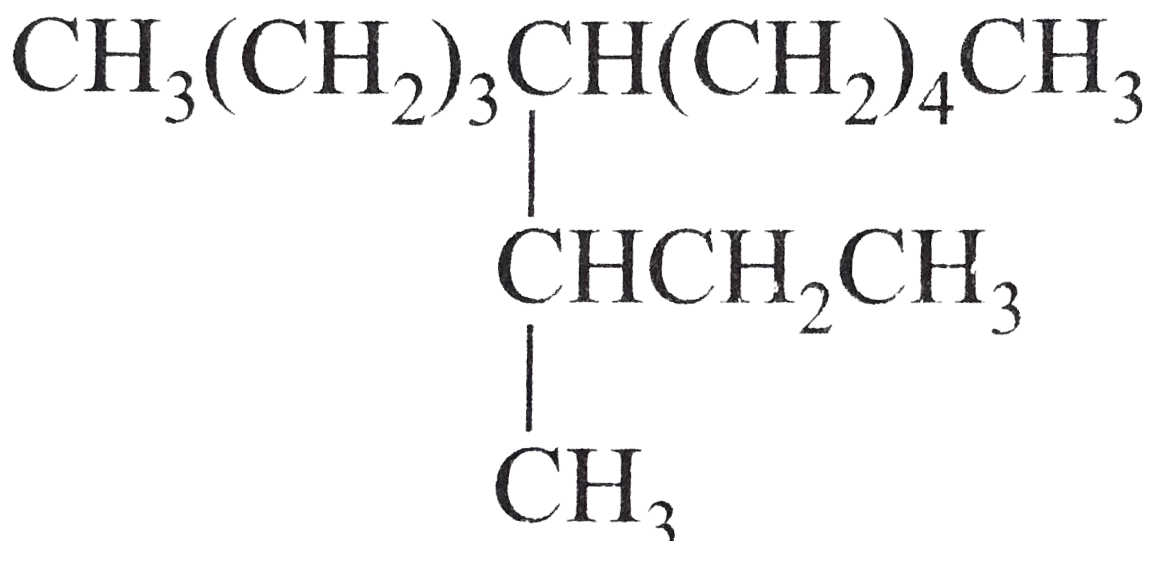
(viii) Isobutane
(ix) Neopentane
(x) Isooctane
(xi)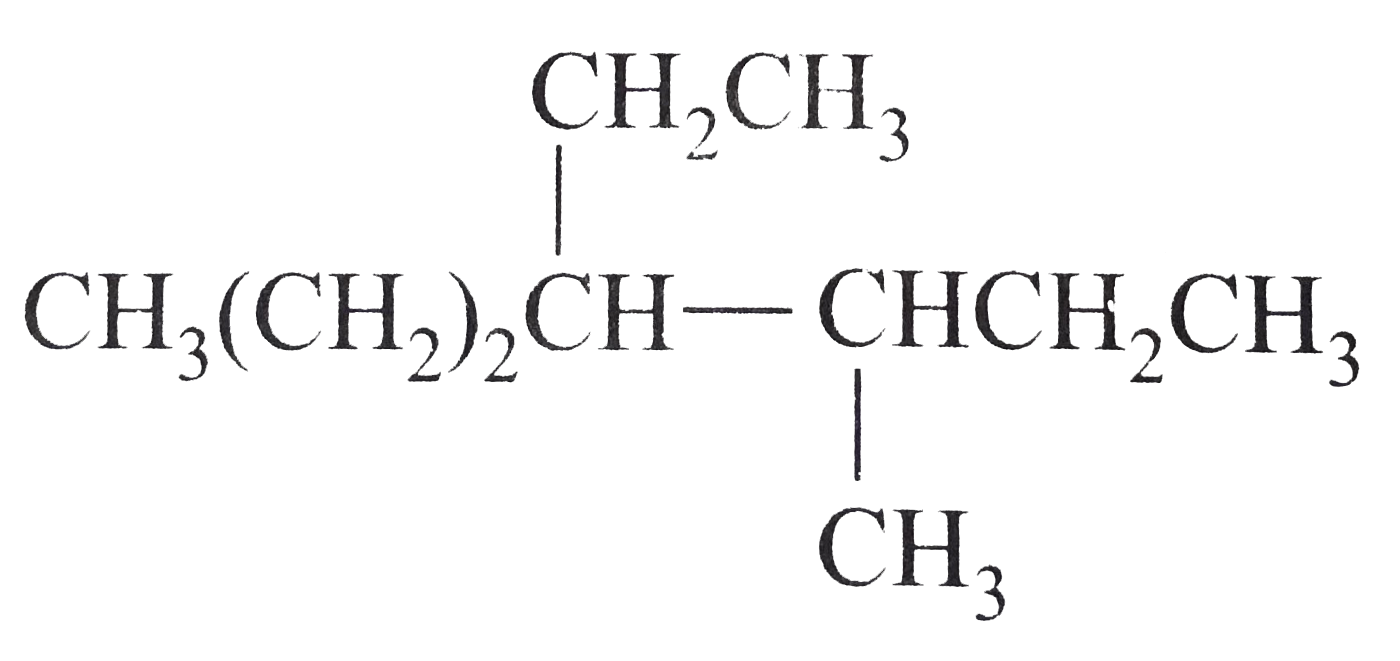
(xii)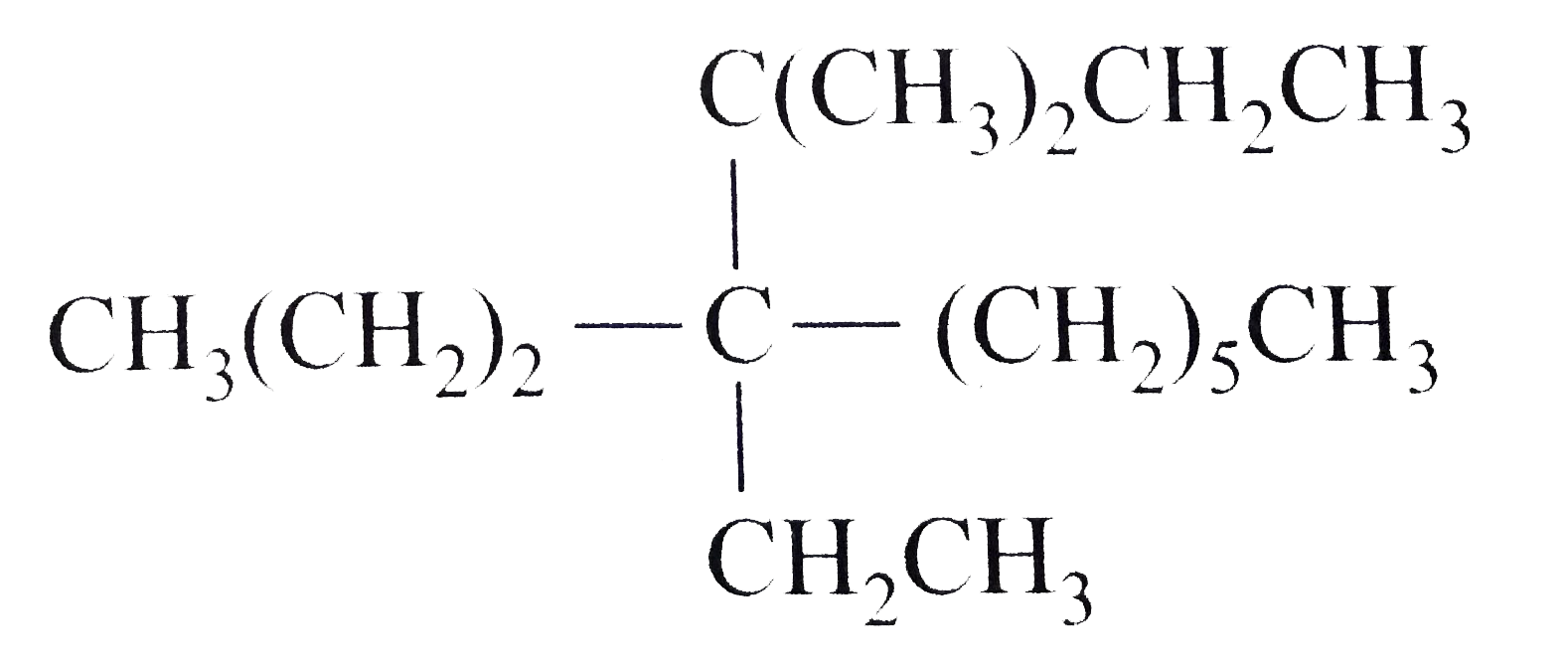
(xiii)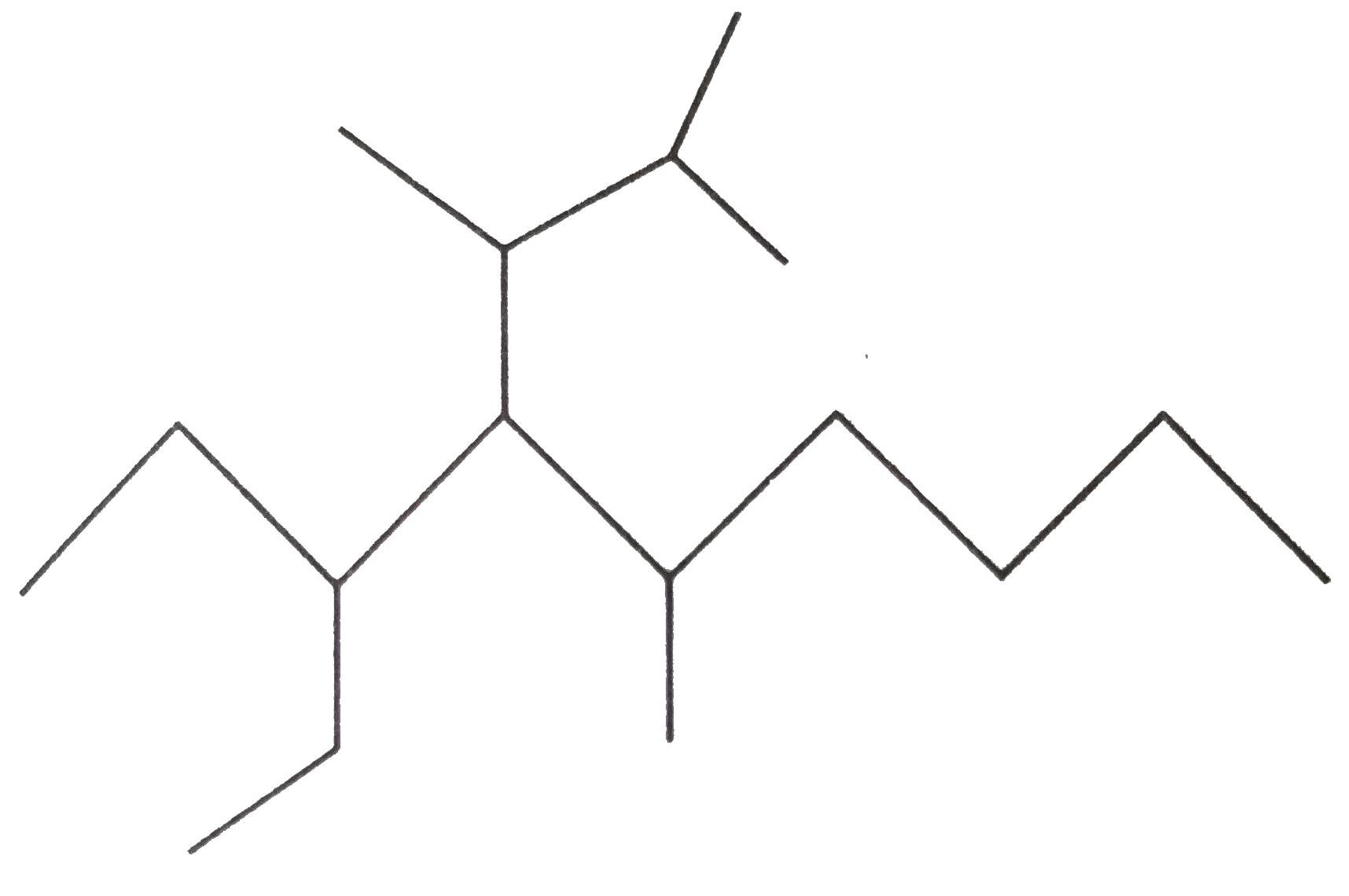
(xiv)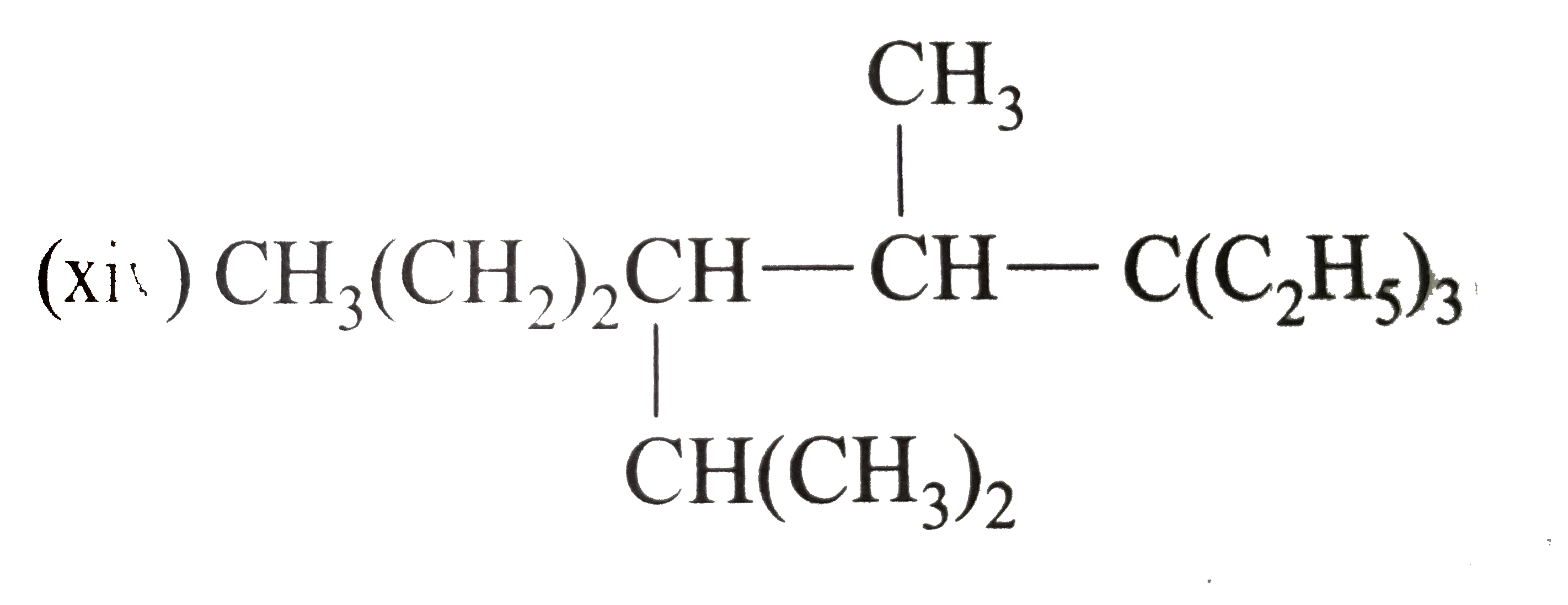
(xv) `4`-tert-Butyloctane
Strategy: Open up the structure if brancehes are present. Select the longest possible continous `C` chain carrying the maximum number of branches as the parent chain. Number the parent chain using the smallest possible number or lowest set of locants for the substituents `(s)`. Assign the name and position number to each and every substituents. Write the name as a single word. Use hyphens to seperate numbers and letters. Do not leave any spaces.
View SolutionExplain why the following names are incorrect? ,
(i) `3, 4, 7`- Trimethylbutyl)-`3`-ethyldecane
(ii) `5-(2,2`-Dimenthylvutyl)-`3`-ethyldecane
(iii) `5`-Ethyl-`3`-methylheptane
Strategy: First write down the structure of the alkane according to the given name. Then rename it according to the prescribed `IUPAC` rules. Any mismatch will help to identify the error.
View SolutionWhich of the following pentanes has only mary hydrogen atoms? ltbr? (i) `n`-pentane , (ii) Isopentane
(iii) Neopentane
Strategy: Write down the structure of every alkane. The presence of `1^(@)H` atoms is indicated by the presence of `CH_(3)` groups, `CH_(2)` units contain `2^(@) H` atoms, and `CH` units consits of a `3^(@) H` atom.
View SolutionGive the `IUPAC` names for the following mono-cyclic compounds:
(i)
(iii) tert-butylcyclopentane
(iv) Isopropyl -`3`-methlcyclohexane
Strategy: Substituted cycloalkanes are named is exactly the same way as branched chain alkanes.
View SolutionGive the IUPAC names for each of the following bicyclic alkanes:
(i)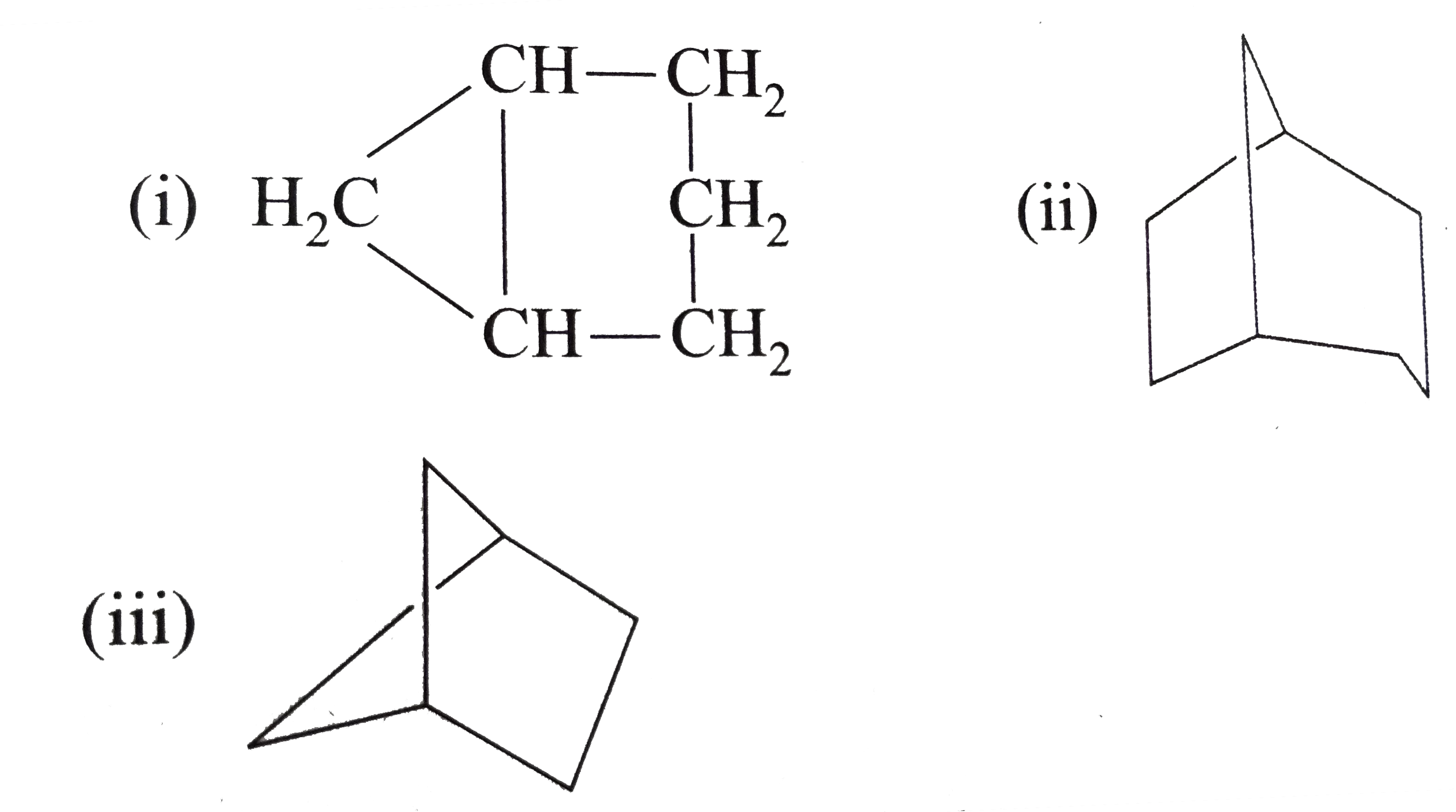
Strategy: Combine the prefix bicyclo-with a pair of square brackets enclosing numbers separated by periods. It is then followed by the name of the alkane whose number of `C's` equals the number of `C's` in th rings. The bracketed numbers show how many `C's` are in each bridge and are cited in decreasing order.
View SolutionGive the `IUPAC` names for the following
(i) `CH_(2)=CH-underset(CH_(3))underset(|)CH-CH_(3)`
(ii) `(CH_(3))_(2)CH-CH=CH-CH_(2)-underset(CH_(2)CH_(3))underset(|)underset(H_(3)C-CH-CH)underset(||)(CH_(2)`
(iii)
(iv) `CH_(2) = C(CH_(2)CH_(2)CH_(3))_(2)`
(v)
(vi)
( vii)`CH_2=CH-CH_2oversetoverset(CH_3)(|)CHCH_3`
(viii) `CH_(2)=CH-underset(CH_(2)CH_(2)CH_(3))underset(|)(CH)(CH_(2))_(4)CH_(3)`
(ix) `CH_(3)CH_(2)CH_(2)CH_(2)-overset(H_(3)C)overset(|)(C )=overset(CH_(2)CH_(3))overset(|)(C(CH_(2))_(3)CH_(3)`
(x)
(xi)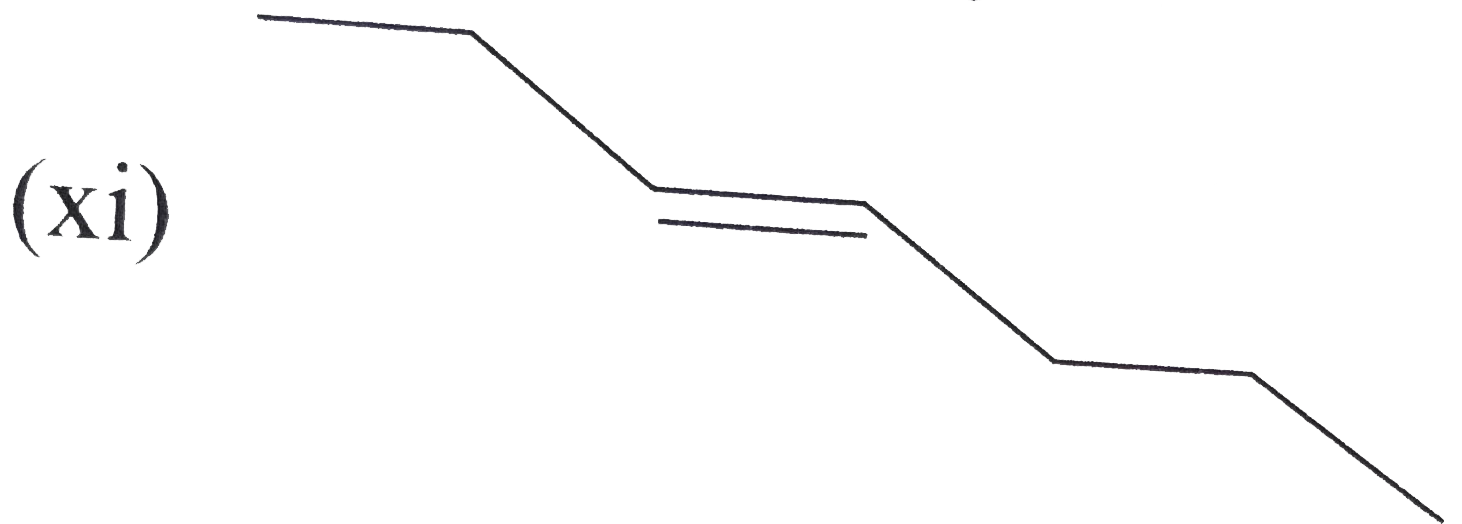
(xii)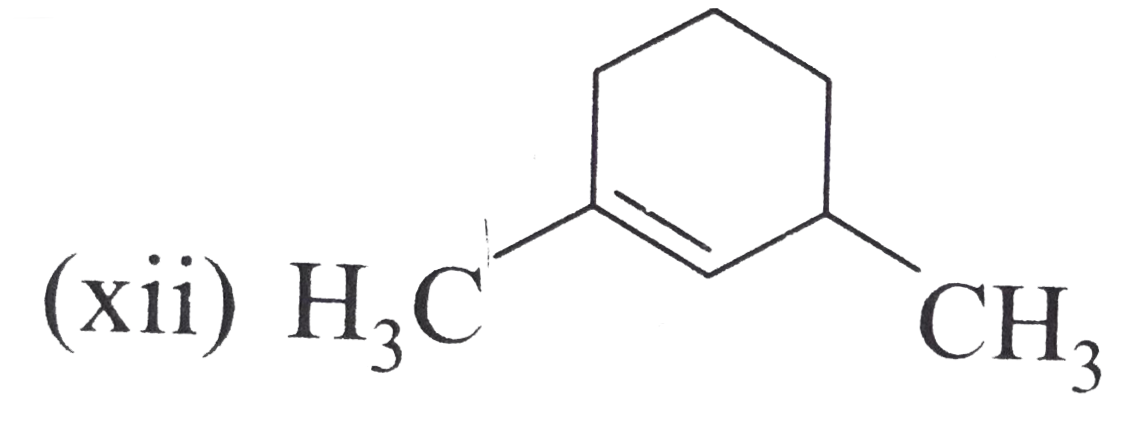
(xiii)
(xiv) Tetramethylethlene
(xv)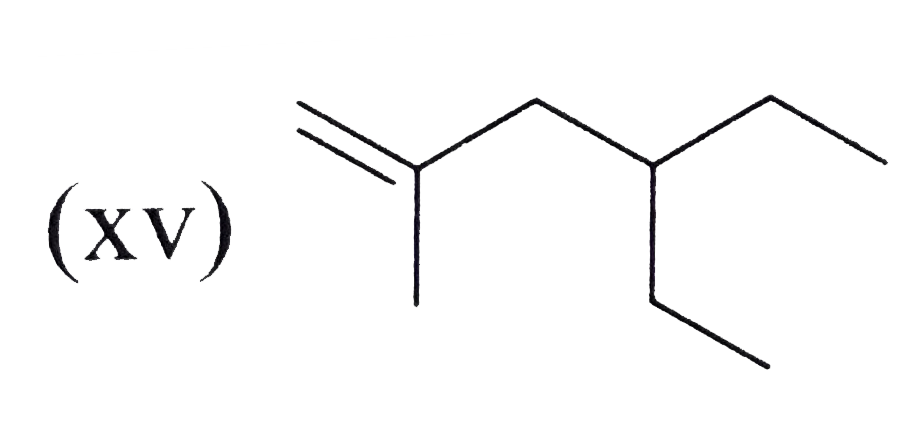
(xvi)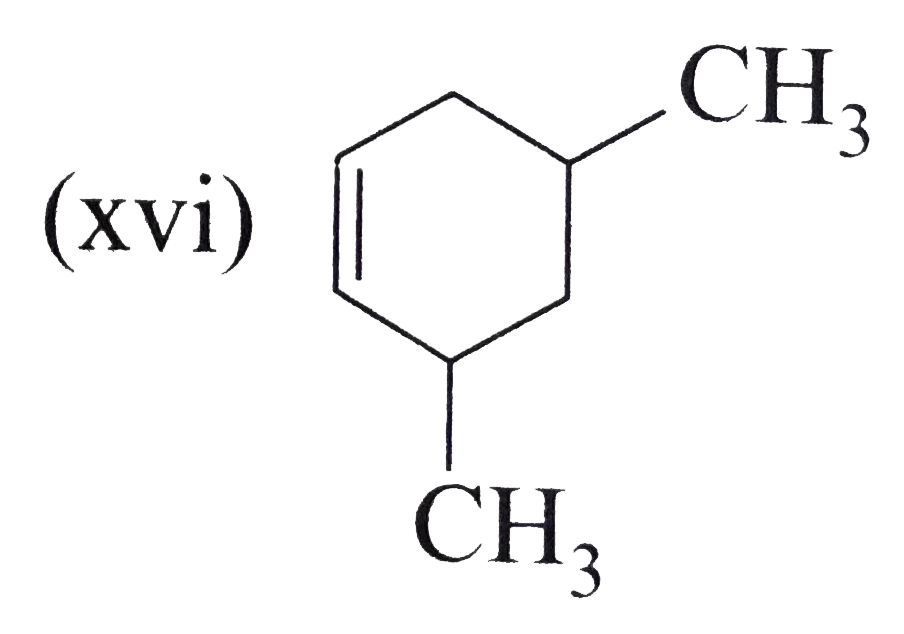
Strategy: Select the longest possible continuous carbon chain or ring containing the largest number of double bonds and carrying the maximum number of side chains. Change the suffix of the parent alkane from -ane to -ene. The parent chain is numbered from the end closer to `C = C`, whoese position is indicated by assigning the lower possible number to the first doubly bonded `C`. Subsitituents are designated in exactly the same way as done for branched alkanes.
View SolutionWrite the structure formulas for the following:
(i) cis-Oct-`3`-ene
(ii) `2,4`-Dimethylpent-`2`-ene
(iii) `3,4`-Dimethylcyclopentene
(iv) `1,3`-Dimethylcyclohexene
(v) Vinylcyclopentane
Strategy: first write down the parent `C` chain. Then introduce the double bond between the suitable `C` atoms. Finally attach the substituents and the suitable number of `H` atoms to satisfy the valency of `C's`. In cycloalkenes, one can write down the double bonds anywhere in the ring but the position of substituents is fixed by the position of double bonds.
View SolutionGive the `IUPAC` names for the following:
(i) `CH_(3)-underset(CH_(3))underset(|)overset(CH_(3))overset(|)(C )-C-=CH`
(ii) `CH_(2) = CH - CH_(2) - C -= CH`
(iii) `CH_(3)C-=C CH_(2)underset(CH_(3))underset(|)overset(CH_(3))overset(|)(C )-CH_(2)CH_(3)`
(iv) `(CH_(3))_(3)C - C -= C(CH_(3))_(3)`
Strategy: Alkynes are named in much the same way as alkanes. Unbranched alkynes are named by replacing the -ane of the name of the correponding alkane with the ending -yne. The chain is numbered fo as to give the `C` atoms of the triple bond the lower possible numbers. The lower number of the two `C` atoms of the triple bond is used to designate the location of the triple bond. The locationa of side chains of branched alkynes are also indicated with lower numbers.
View SolutionDraw the structures for the following compounds.
(i) Hexa-`1,3`-dien-`5`-yne
(ii) Cyclodec-`1`-en-`4`-yne
(iii) `5`-Ethynyl-`1,3,6`-heptatriene
Strategy: First write down the parent chain or ring. Then introduce the multiple bonds at suitable locations.
View SolutionWrite the systematic names of the following aromatic compounds:
(i)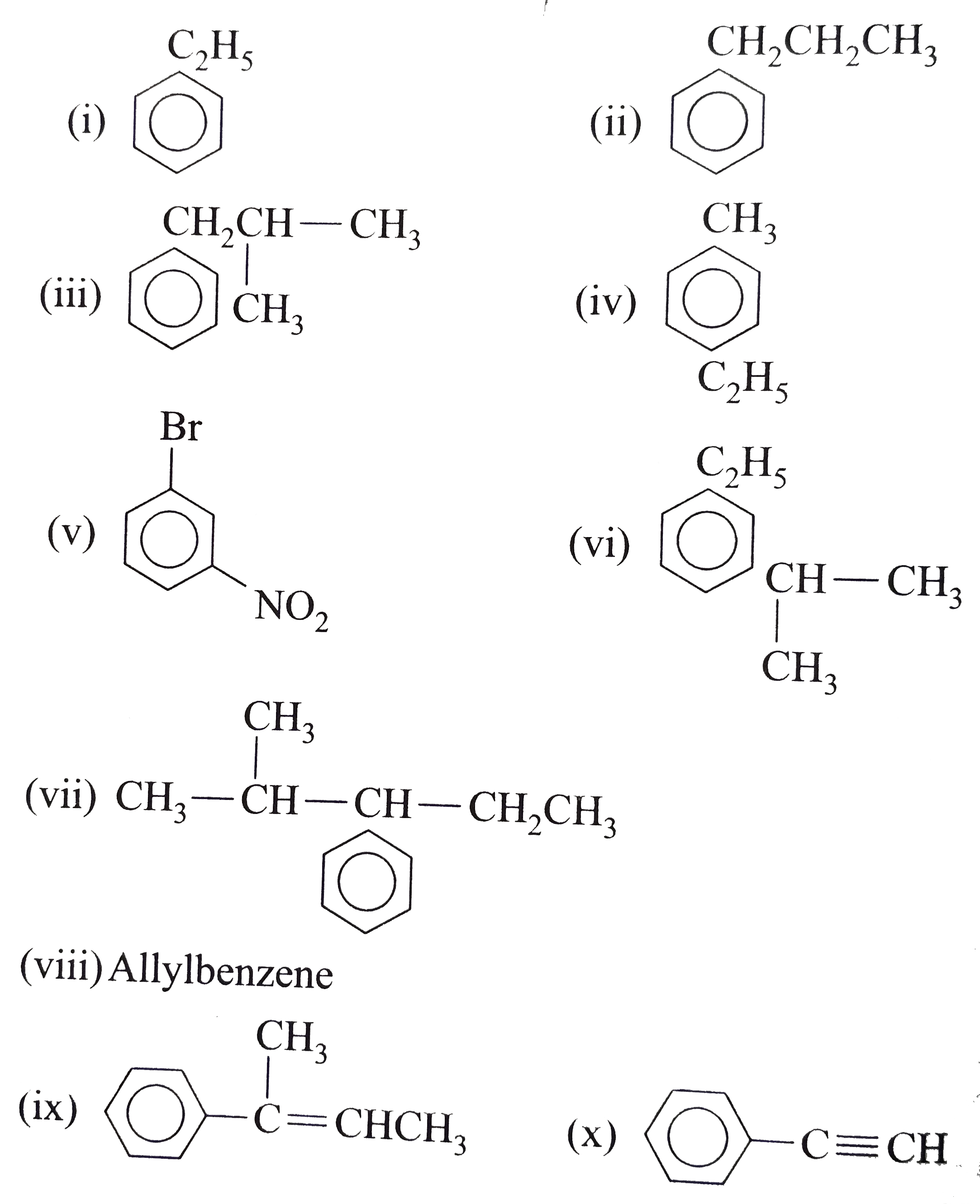
(ii)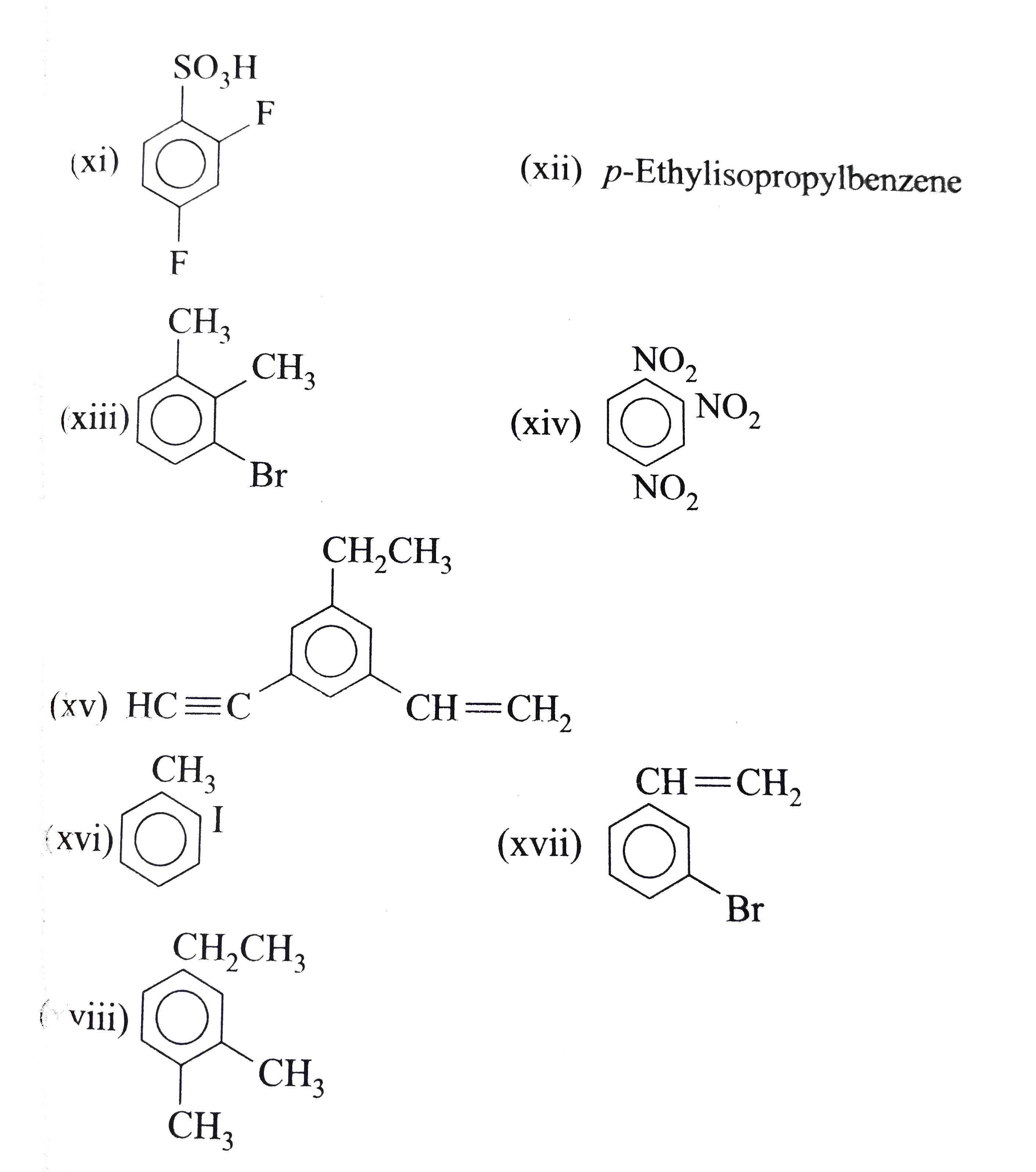
(xix) para-Bromo - tert-butylbenzene
Strategy: If there is only one group on the ring, no number is needed to designate its position. If there are two groups, we use the traditional designations (`1,2`-for ortho, `1,3`-for meta, and `1,4`-for para). If there are three or more goups on the ring then location numbers are assigned to give the lowest set of locants.
View SolutionDraw the structures of the following compounds.
(i) `m`-Bromochlorobenzene (or `1`-Bromo-`3`-Chlorobenzene)
(ii) `p`-Chlorotoluene
(iii) `4`-Bromo-`o`-Xylene
(iv) `p`-Iodo-`o`-cresol( or `4`-Iodo-`2`-methylphenol)
(v) `3`-Bromo -`p`-hydroxybenzoic acid ( or `3`-Bromo-`4`-hydroxybenzoic acid)
(vi) `2`-Nitro-`p`-toluidine or `4`-amino--`3`-nitrotoluence or `1`-amino-`4`-methyl -`2`-nitrobenzene
(vii) `2`-Chloro -`1`-metyl-`4`-nitrobenzene
Straregy: First draw the strucuture of the parent compound. Then place the substituents at their positiions.
View SolutionGive the `IUPAC` names of the following aromatic compounds:

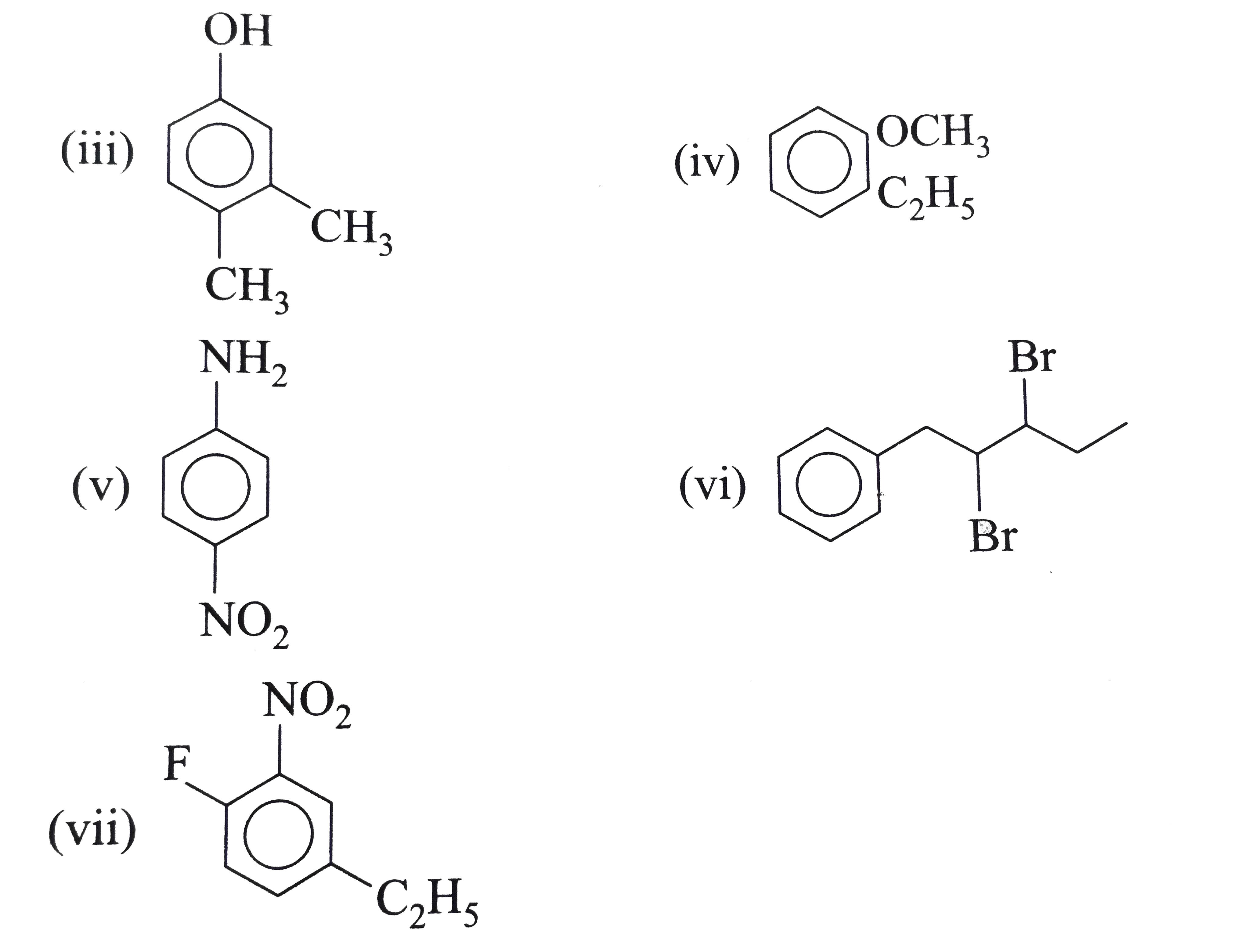
Strategy: If there are three or more groups on the ring, location numbers are assigned to give the lowest set of locants. If one of the groups can impart a special name, then the compound should be named as its derivative.
View SolutionName the following compounds systematically
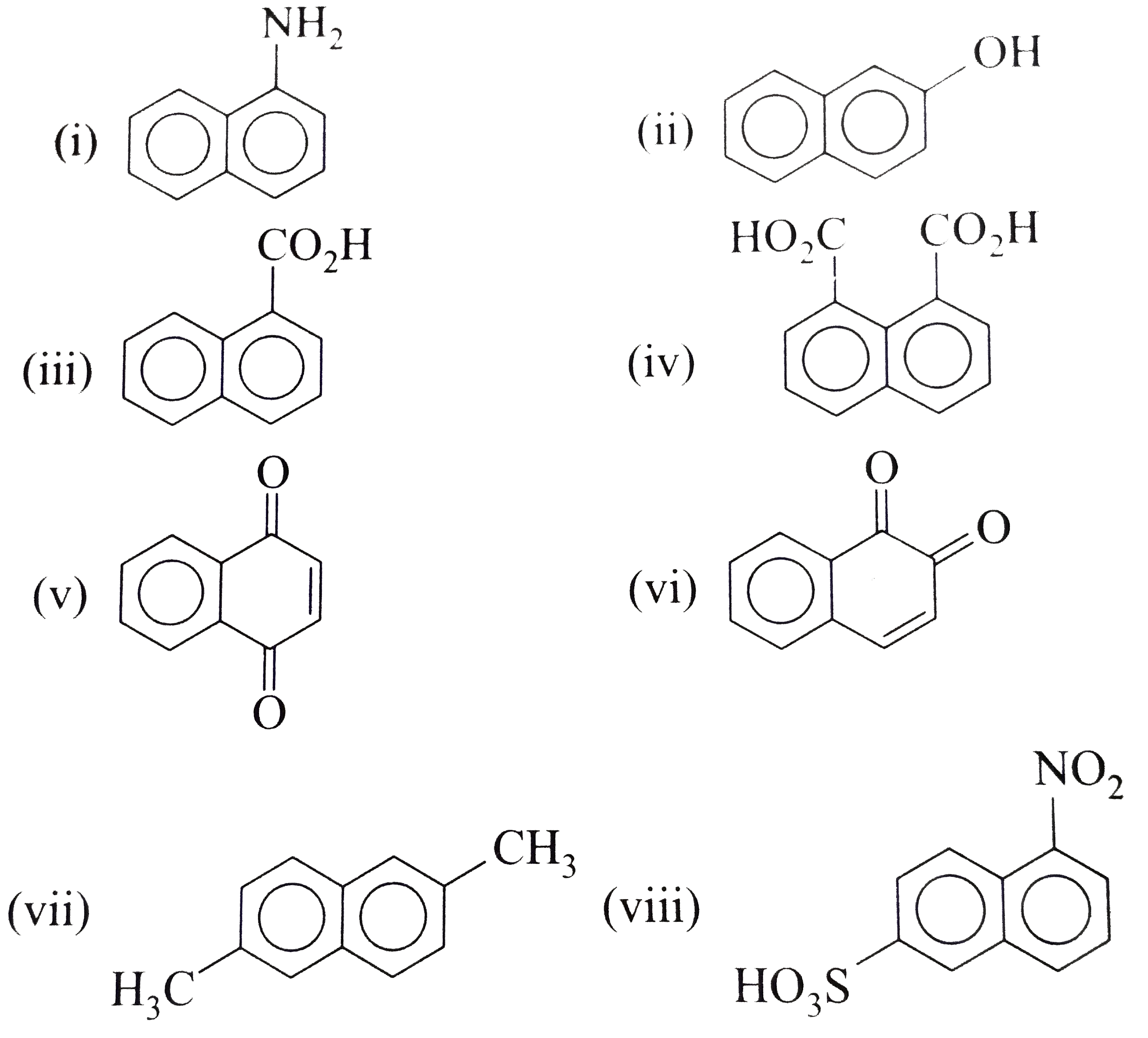
Strategy: Use the following designation of positions in the naphthalence ring system:
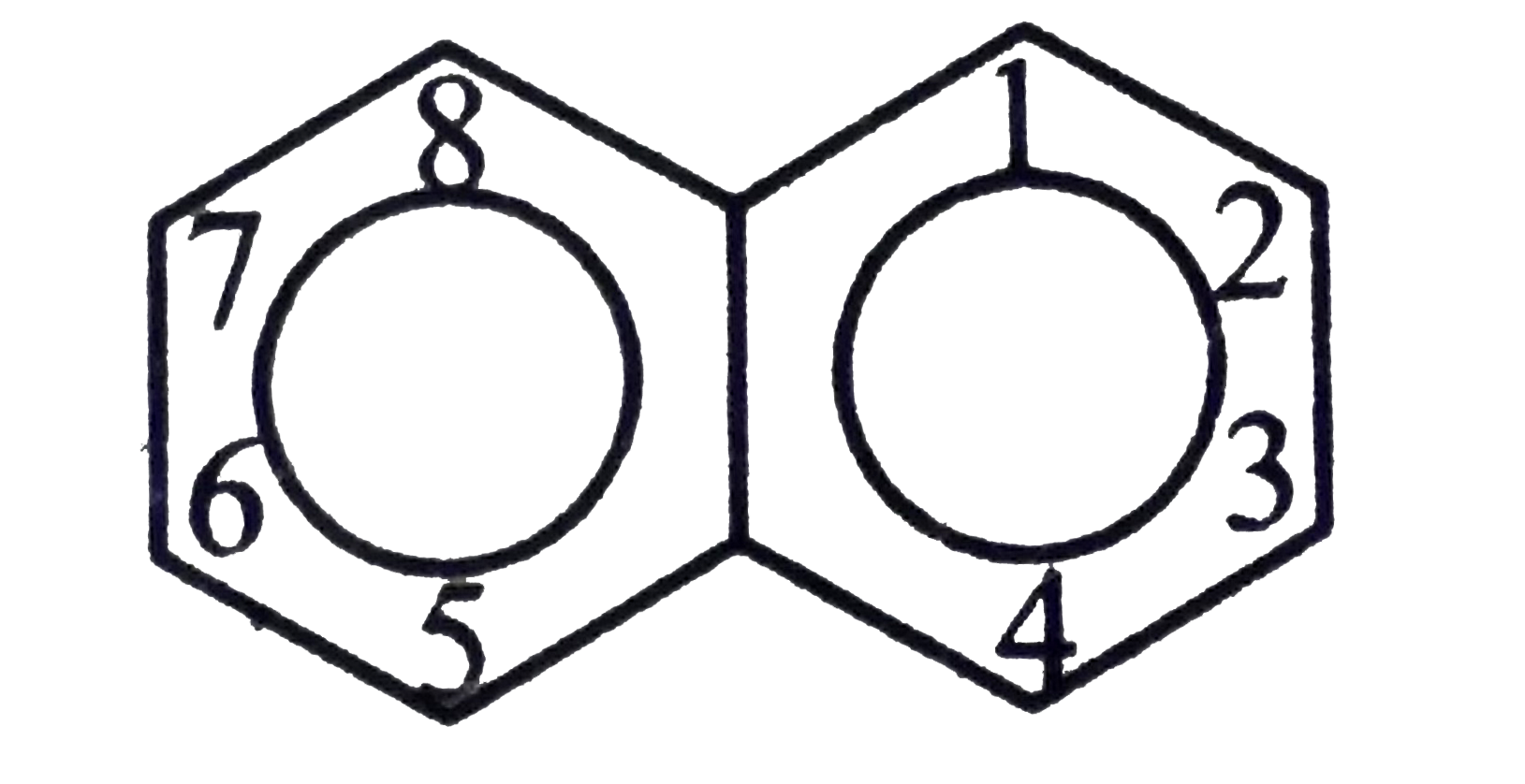
View SolutionName the following compunds systematically:
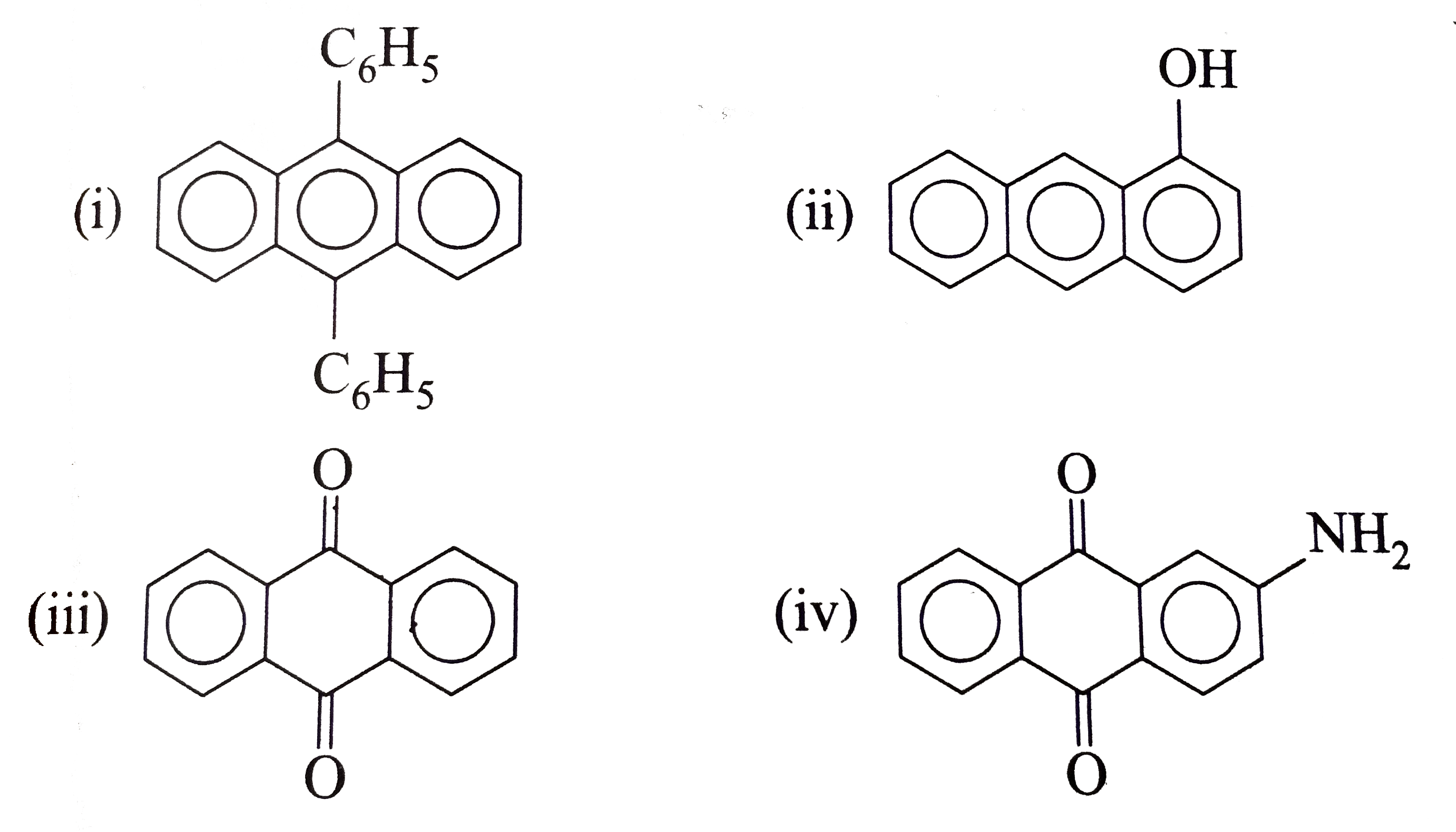
Strategy: Use the following designation of positions in the ant-hracene ring system:
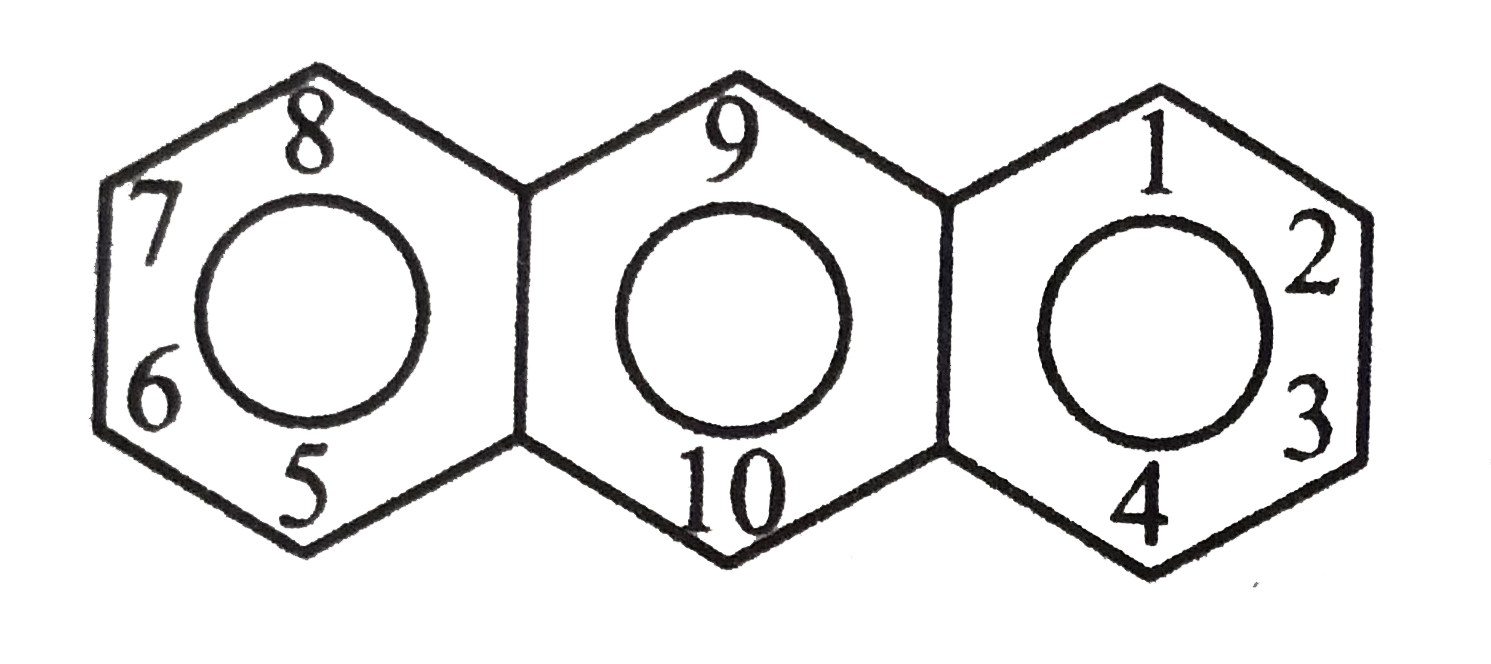
View SolutionGive the `IUPAC` names for the following:
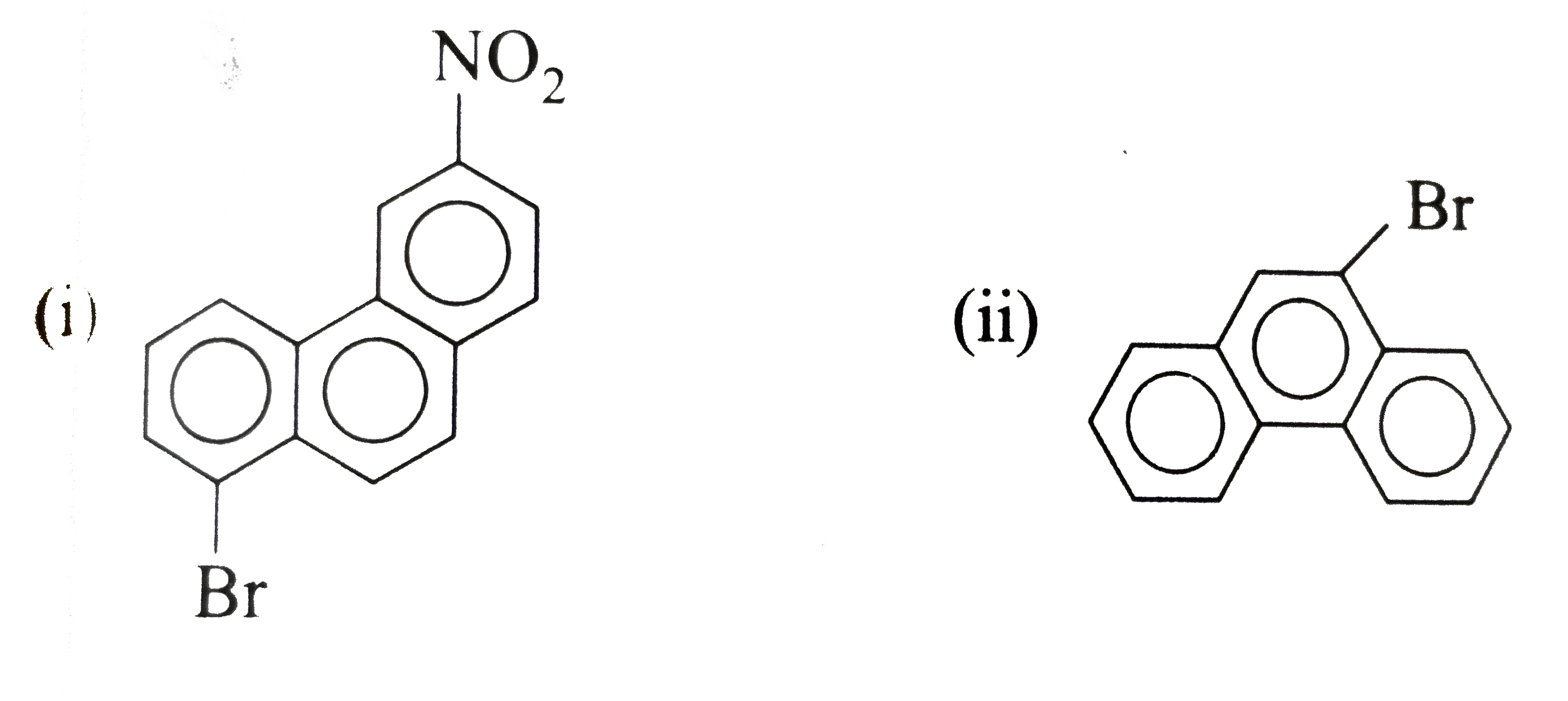
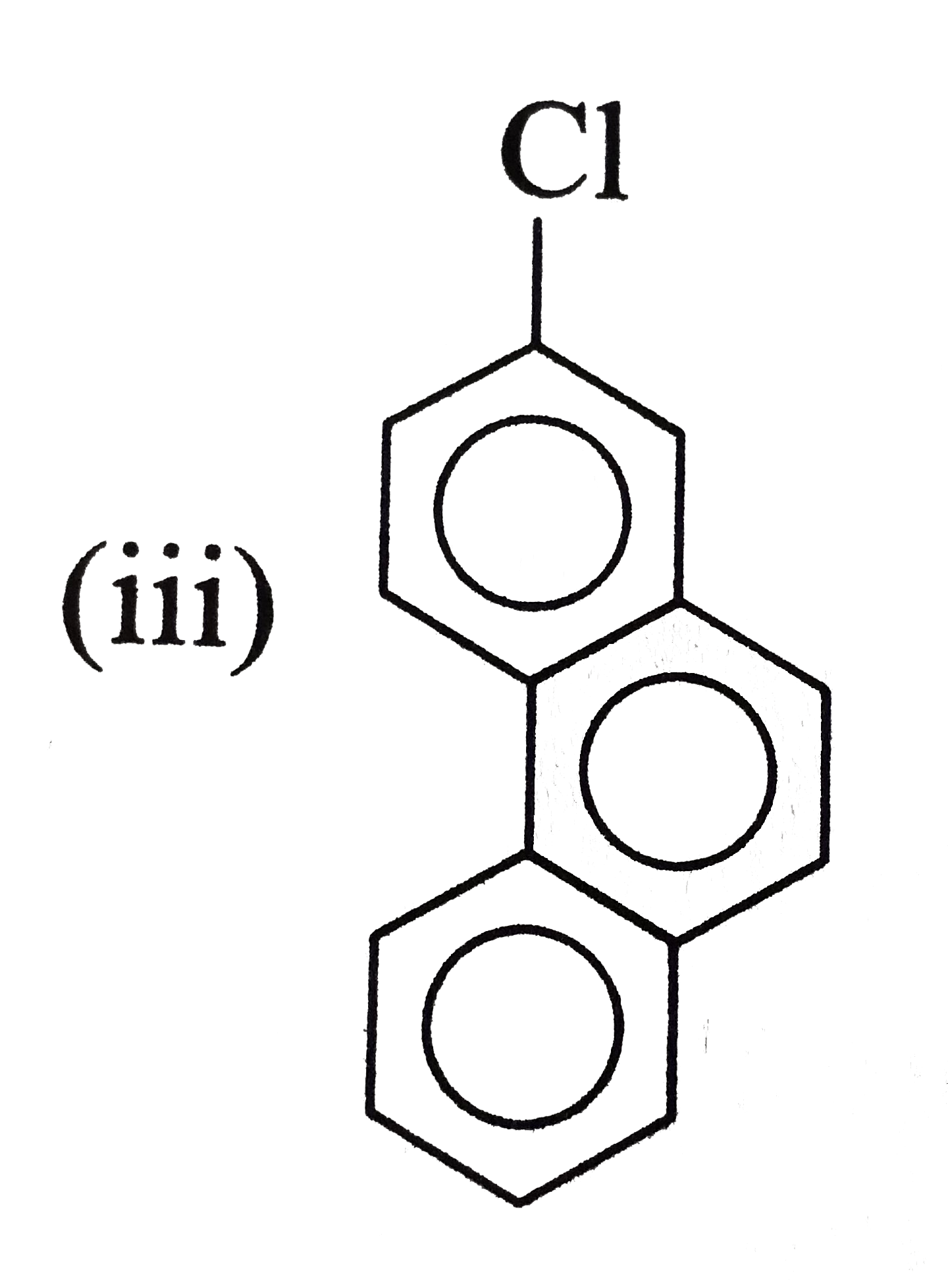
Strategy: The formula of phenanthrene may be written in three different ways:
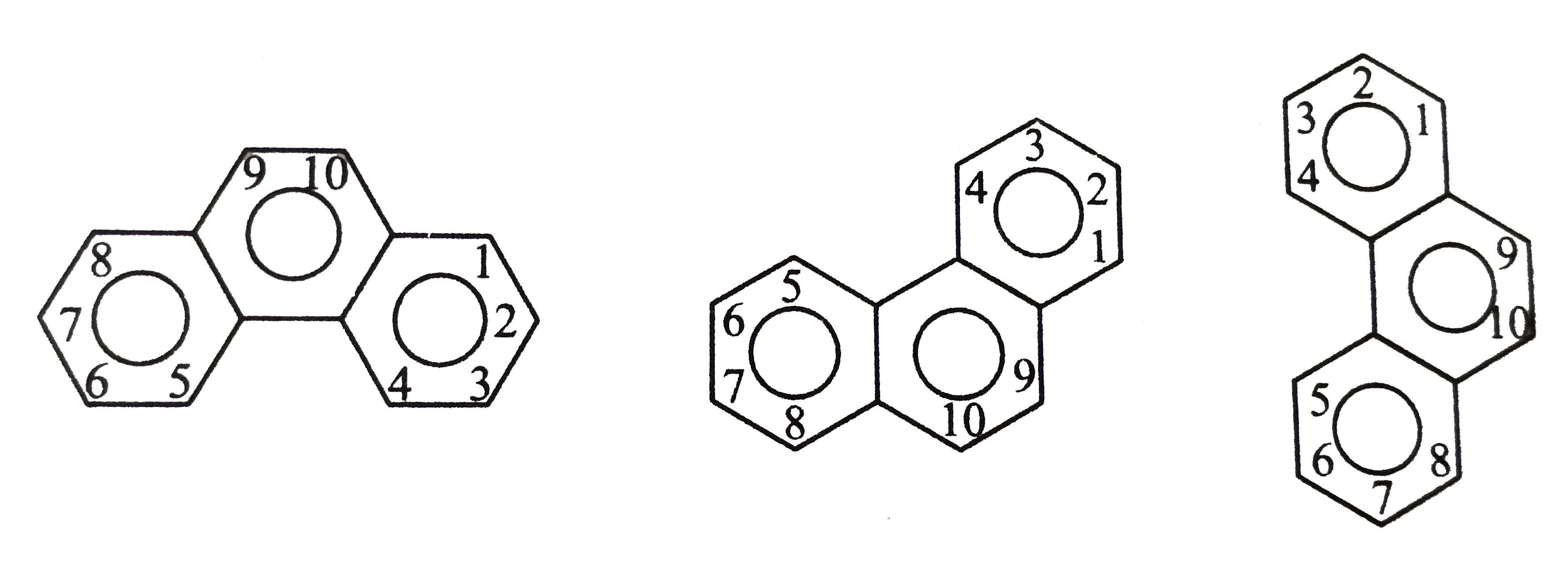
The pattern of numbering can be reversed so as to give lower numbers to the `C` atoms carrying the substituents.
View SolutionDraw the structure of the following:
(i) `alpha`-Naphthol , (ii) `1`-Methylanthracene
(iii) `9`-Methylphenanthrene
Strategy: Follow the numbering system pf polynuclear hydrocarbons. Each system has its own numbering system around the periphery.
View SolutionDraw the structure of `5`-Butyl-`3`-chloro-`2,2,3`-trimethyldecane.
Strategy: First write down the `C` skeleton of the parent alkane. Then attach different substituents at their locations, and finally attach suitable number of `H` atoms to fulfill the valency of `C` atoms.
View SolutionGiven the `IUPAC` names of the following haloalkanes and label them as primary `(1^(@))`, secondary `(2^(@))`, or tertiary `(3^(@))`
(i) tert-pentylioddie
(ii) `CH_(3)CH_(2)underset(Cl)underset(|)CHoverset(CH_(3))overset(|)(CH)CH_(3)`
(iii) Isobutyl chloride
(iv) `n`-butyl bromide
(v) `CH_(3)CH_(2)-underset(Br)underset(|)overset(CH_(3))overset(|)C-CH_(2)-overset(CH_(3))overset(|)(CH)-CH_(3)`
Isopropyl chloride
Strategy: For common names, first write the sturucture of the alkyl group, and then attach the halgon atom to the free valency.
View SolutionName the following compounds:
(i) `CH_(3)underset(Br)underset(|)(CH)underset(Cl)underset(|)CHCH_(2)OH`
(ii) `CH_(3)underset(CH_(3))underset(|)(CH)CH_(2)underset(OH)underset(|)(CH)CH_(3)`
(iii)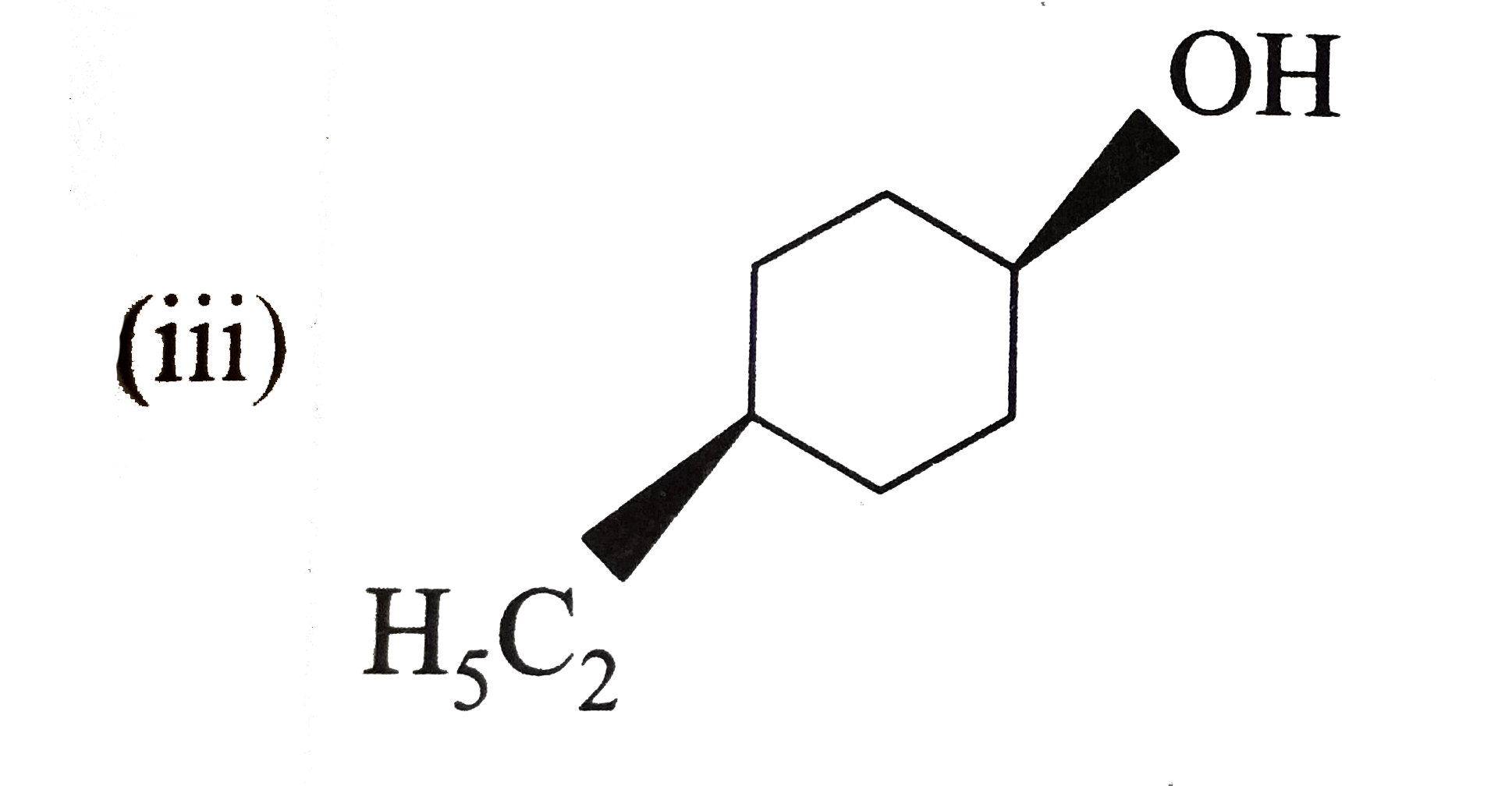
(iv) Benzyl alcohol
Strategy: Give the lowest possible number to the `C` atom carrying the `-OH` group.
View SolutionDraw the structure of the following compouds:
(i) Neopentyl alcohol
(ii) trans-`2`-bromocyclopentanol
(iii) `3`-Methylhexan-`3`-ol
(iv) `4`-Phenylpentan-`2`-ol
Strategy: First write down the parent chain or ring, and then attach the `-OH` group and other sustituents to it according to their locants.
View SolutionGive the `IUPAC` names for the following ethers:
(i) tert-Butylphenyl ether
(ii) `CH_(3)underset(OCH_(3))underset(|)(CH)CH_(2)CH_(2)CH_(3)`
(iii)
(iv) sec-Butyl isopropyl ether
(v) `beta`-Chloroethyl methyl ether
(vi) Ethyl p-nitrophenyl ether (p-nitrophenetole)
(vii) cyclohexy n-propyl ether
(viii) Benzy vinyl ether
(ix) Cyclopentyl `t`-butyl ether
(x)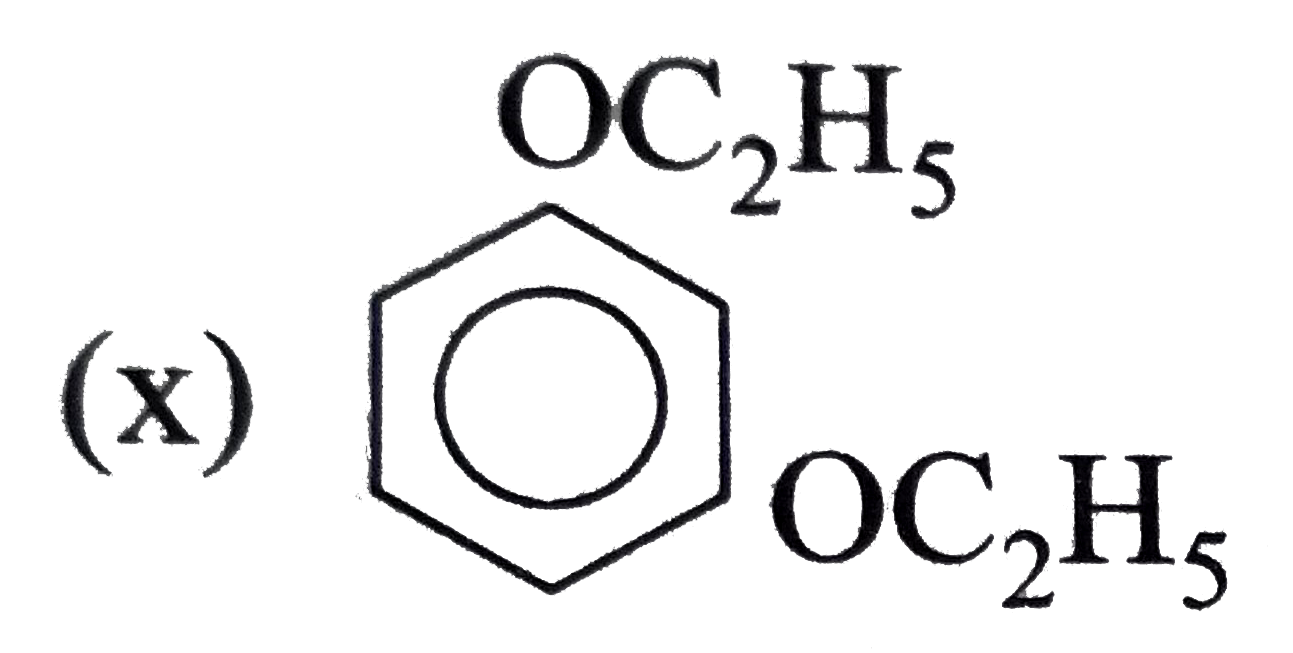
(xi) `overset(1)(CH_(3))underset(OH)underset(|)overset(2)(CH)CH_(2)CH_(2)overset(5)(CH_(2))OCH_(3)`
(xii) `3`-Cyclohexenylisopropyl ether
(xiii)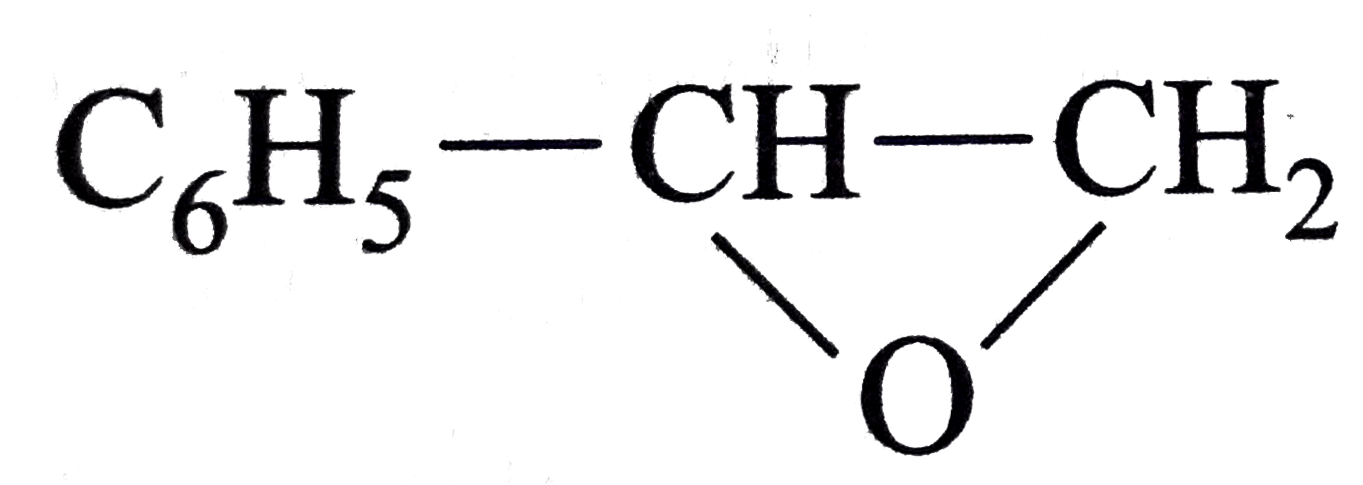
(xiv)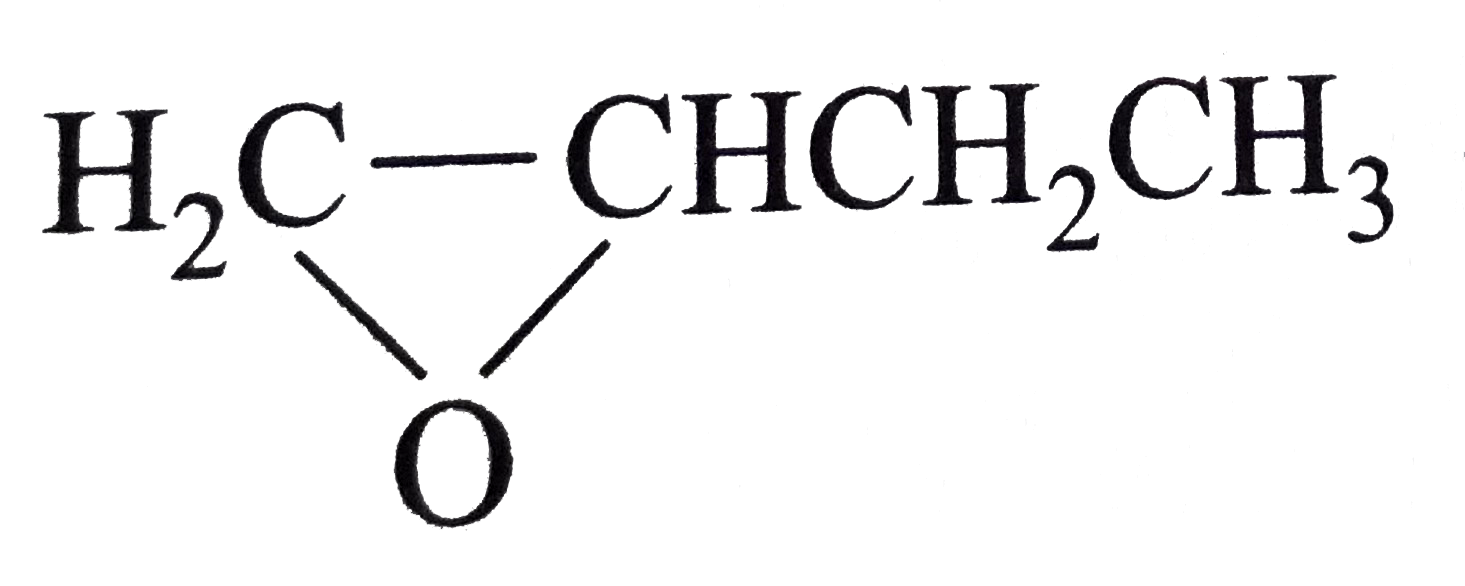
Strategy: In the `IUPAC` system, ethers are named as alkoxyalanes. To write the `IUPAC` names of the commonly named ethers, first with the structure.
View SolutionGive the `IUPAC` names of the following compounds:
(i) `o`-Bromobenzaldehyde
(ii) Diethyl ketone
(iii) `4`-Hydroxy-`3`-methoxybenzaldehyde
(iv)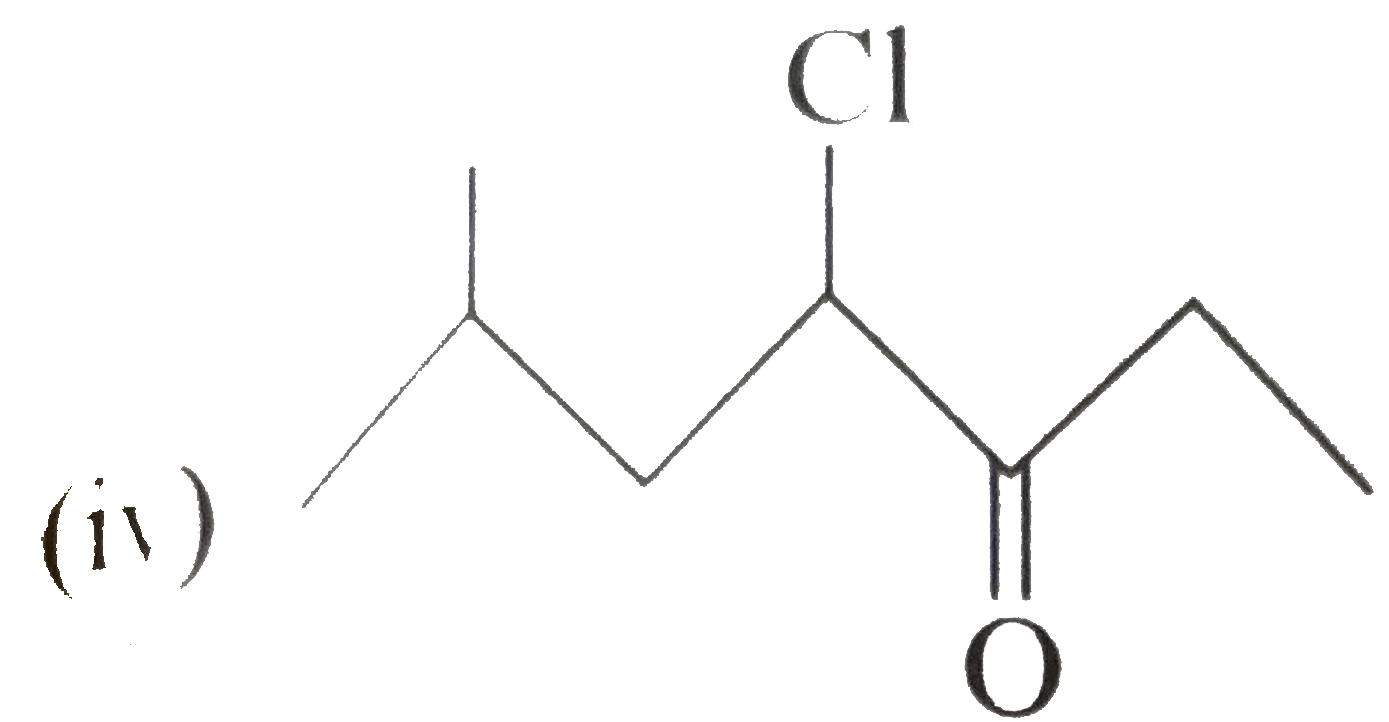
(v) Propargyladehyde
(vi)
(vii) `ClCH_(2)CH_(2)CH_(2)CH_(2)-overset(O)overset(||)(CH)`
(viii) Phenylacetadehyde
(ix)
(x) Allymethyl ketone
(xii) Salicyladehyde (o-hydroxybenzaldehyde)
(xiii) `p`-nitrobenzaldehyde
(xiv) Isopropyl methyl ketone
(xv) Benzyl methyl ketone
(xvi)
Strategy: The `IUPAC` names of aldehydes and ketones are derived from the name of the parent hydrocarbon. The suffix-al is added to the characteristic stem in aldehydes while the suffix -one is added in ketones
View SolutionName and//or draw the structures of the following compounds:
(i) Cinnamaldehyde (`beta`-phenylacraldehyde)
(ii) Anisaldehyde (`p`-methaoxybenzaldehyde)
(iii) `4`-Bromocyclohexanone
(iv)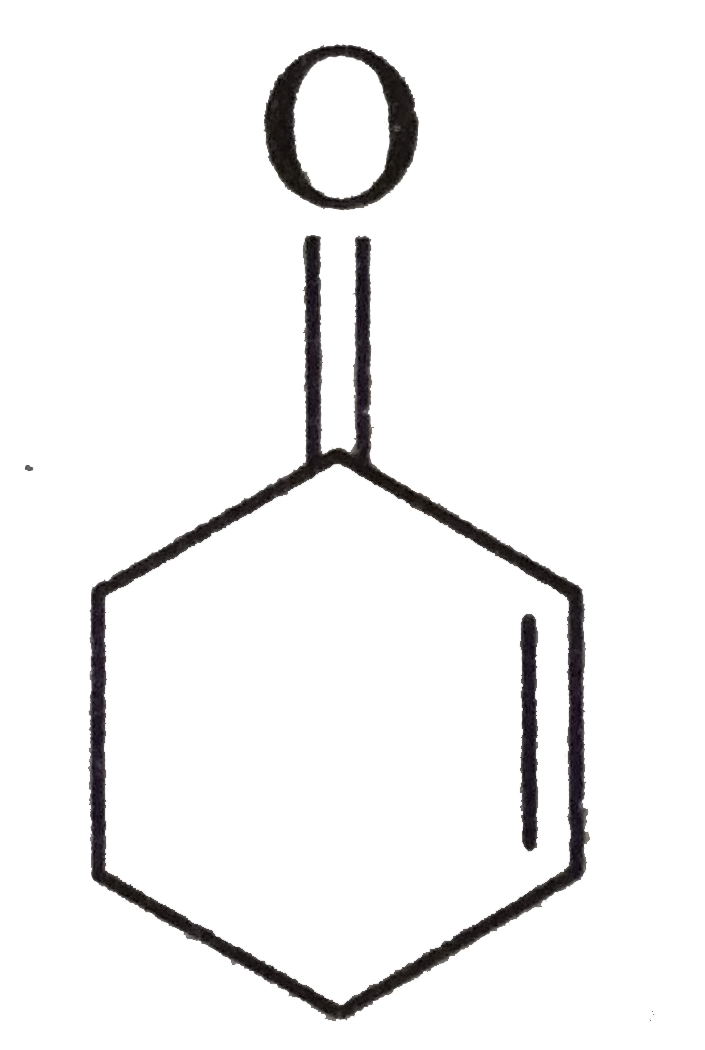
(v)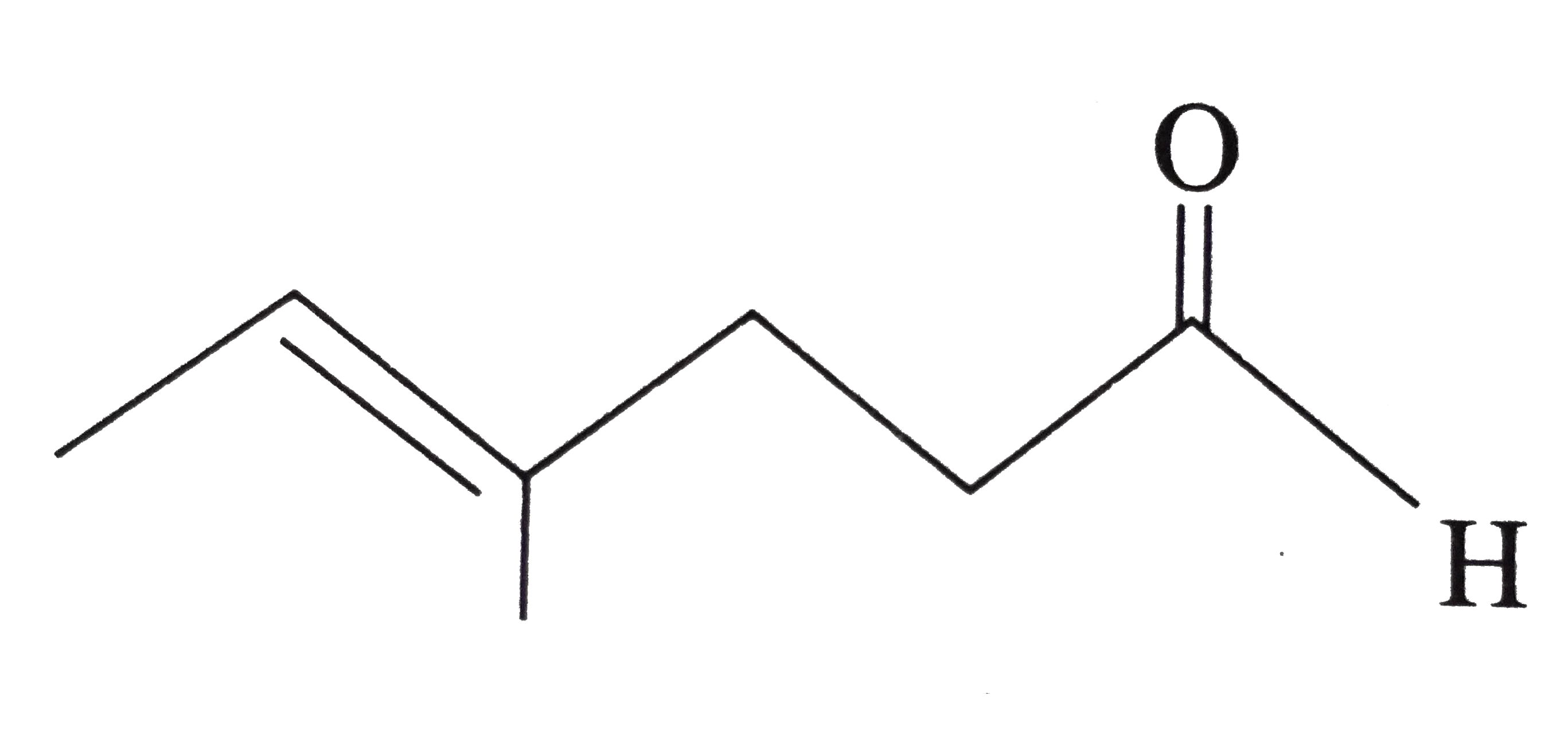
(vi) `3`-Hydroxybutanal
Strategy: Writing the structures of specific names is a bit problem as they have no relationship with the strycture. Thus, we must be familiar with these names and structures.
View SolutionWrite the common names for each of the following structures:
(i) `CH_(3)underset(Cl)underset(|)(CH)underset(CH_(3))underset(|)(CH)CO_(2)H`
(ii) `CH_(3)CH_(2)underset(CH_(3))underset(|)overset(beta)(CH)-underset(CH_(3))underset(|)overset(alpha)(CH)CO_(2)H`
(iii) `underset(Cl)underset(|)(CH_(2))CH_(2)underset(CH_(3))underset(|)(CH)CO_(2)H`
Strategy: Use Greek letters `(alpha, beta, gamma`,etc.) to designate the position of the substituents and side-chains attached to the parent chain.
View SolutionGive the `IUPAC` names for the following:
(i) `CH_(3)underset(CH_(3))underset(|)(CH_(2))CHCO_(2)H`
(ii)
(iii)
(iv) `CH_(3)CH(CH_(3))CH(CH_(3))CH_(2)CO_(2)H`
Strategy: The `IUPAC` name of saturated aliphatic monocarboxylic acids is alkanoic acid. The carboxyl carbon atom is always numbered one while other substituents and side-chains get the lowest possible numbers. To avoid any mistake, it is always advised to open up the structure so that every possible substituent and side-chain is counted.
View SolutionGive the `IUPAC` names of the following:
(i) `CH_(3)CH=CHCH_(2)CO_(2)H`
(ii) `CH_(3)CH=CHCH_(2)CH_(2)CO_(2)H`
(iii) `CH_(3)CH=CHunderset(CH_(3))underset(|)(CH)CO_(2)H`
(iv)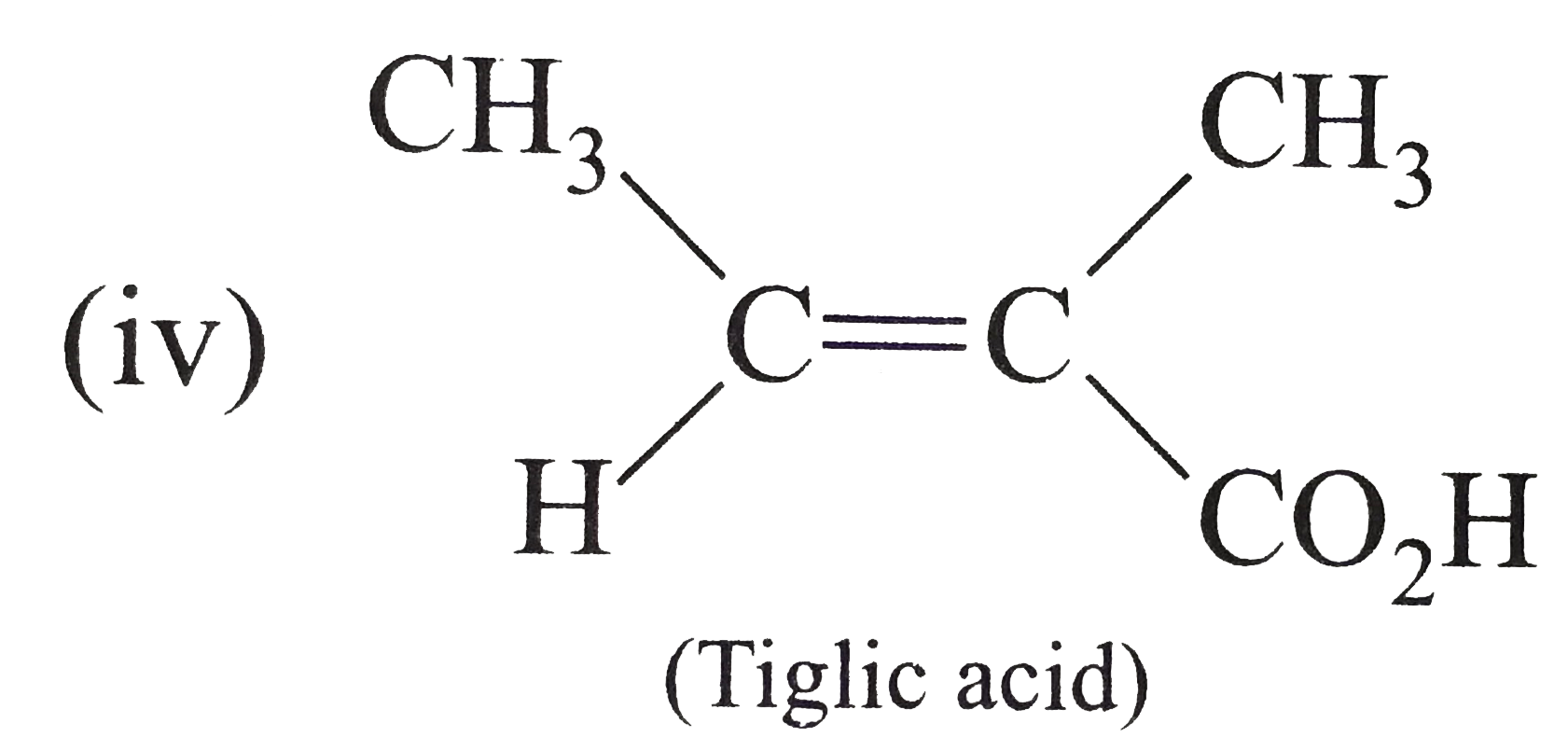
(v)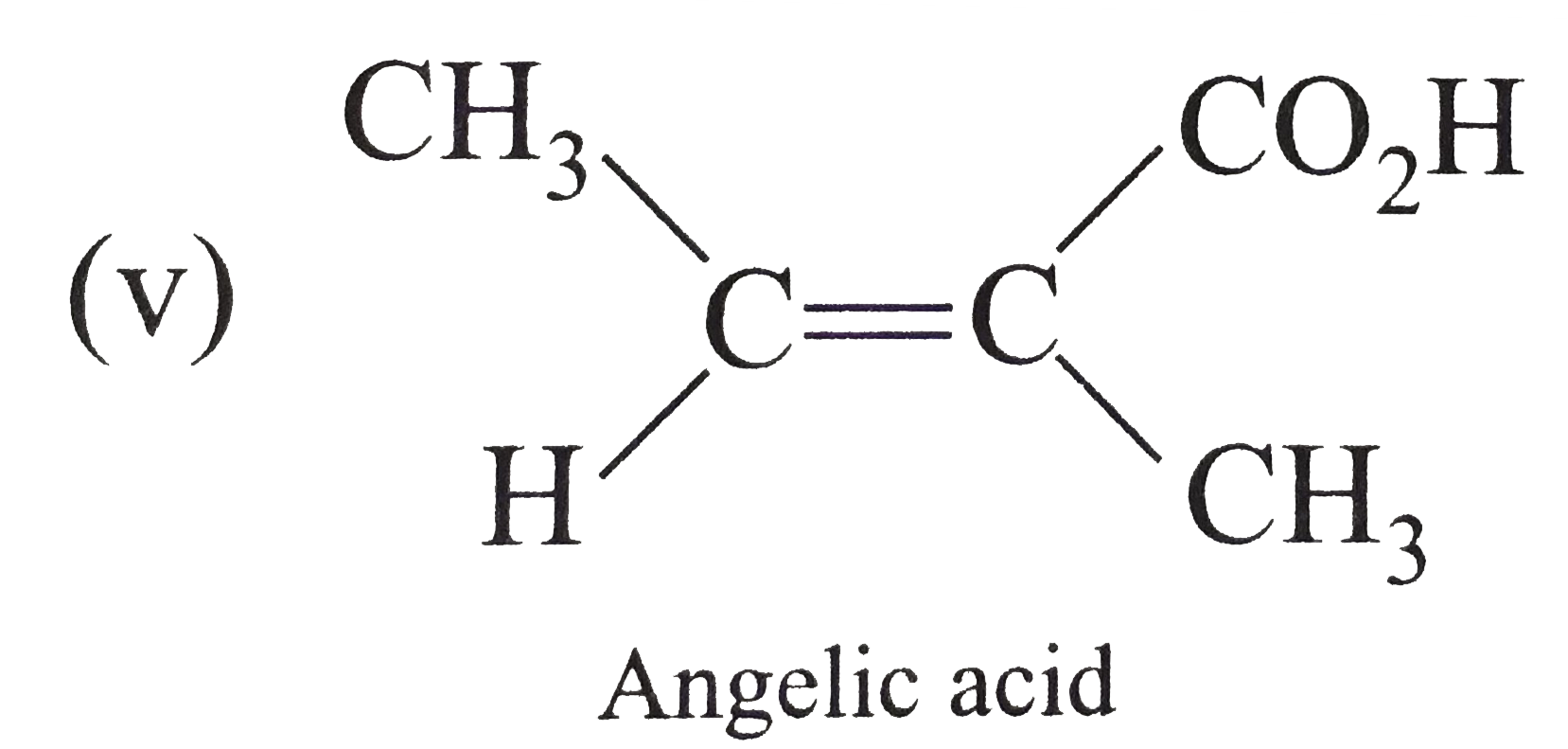
Strategy: Carboxylic acids with double bonds are alkenoic acids with the carboxyl `C` atom numbered as carbon number `1`.
View SolutionGive the `IUPAC` names or write the structure, as appropriate, of the following compounds:
(i) `HO_(2)C CH_(2)underset(NO_(2))underset(|)(CH)CHCO_(2)H`
(ii) Benzoic acid
(iii) `CH_(3)underset(NH_(2))underset(|)(CH)-overset(O)overset(||)(C)-O^(-)Na^(+)`
(iv) `4`-hydroxypentanoic acid
(v)
(vi) `2,2`-Dibromohexanedioc acid
(vii)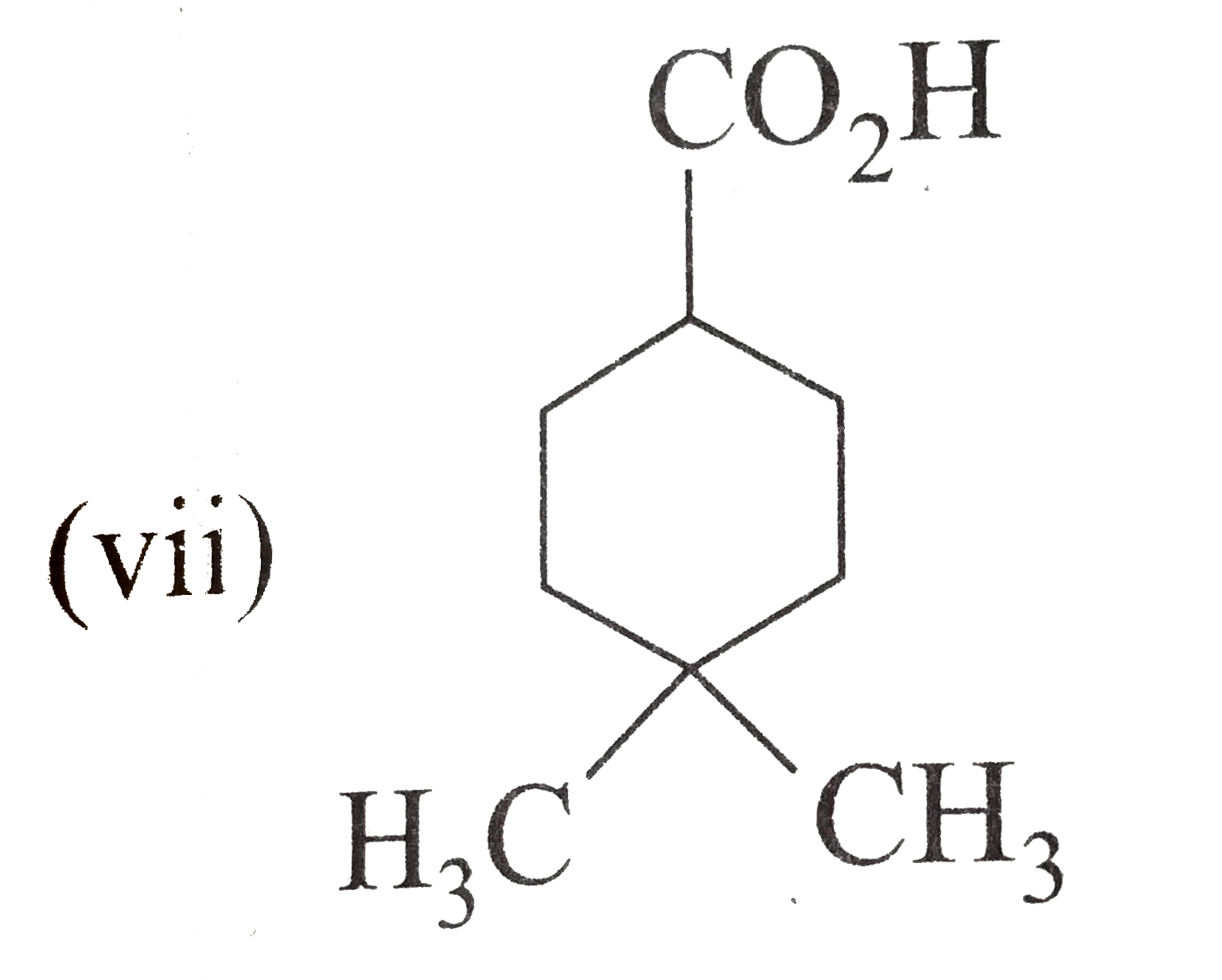
(viii) `4-(1,1`-Dimethylwthyl)benzoic acid
(ix) `HCOONH_(4)`
(x)`underset(Br)underset(|)CH_2-undersetunderset(Br)(|)(CH)-COOK`
(xi) `alpha,beta`-Dimethylvaleric acid
(xii) Phthalic acid
(xiii) Isophthalic acid
(xiv) Terephthalic acid
Strategy: We need prior knowledge to write down the structures of specific names The class suffix of caroboxylic acids is -oic acid and the carnoxyl `C` atom is numbered as `1`.
View Solution
Example questions and complete solutions for chapter NOMENCLATURE OF ORGANIC COMPOUNDS of R SHARMA CHEMISTRY (HINGLISH) of Class 11